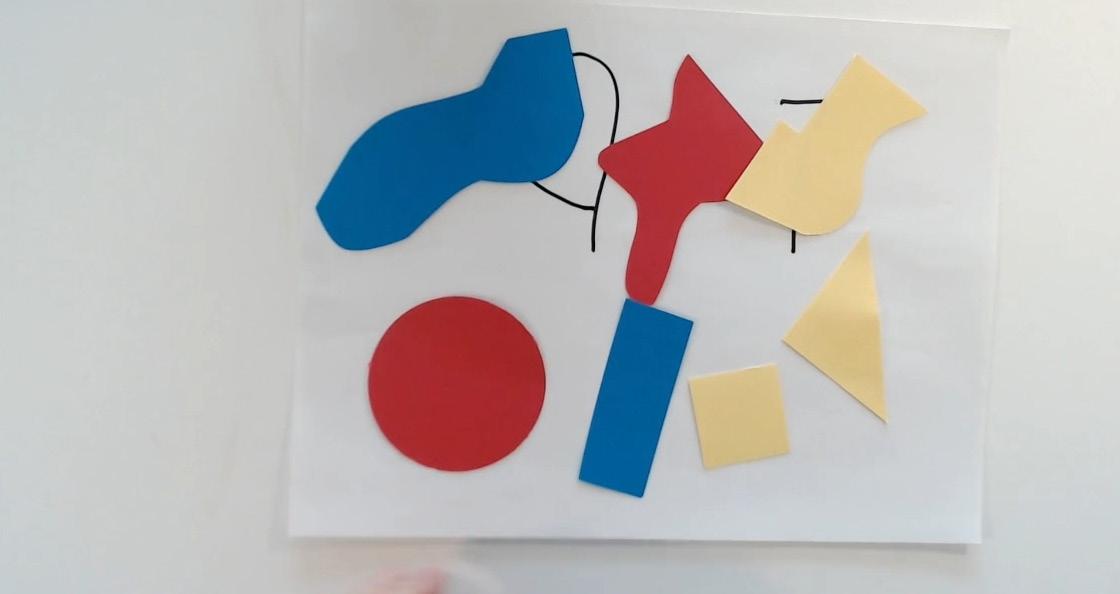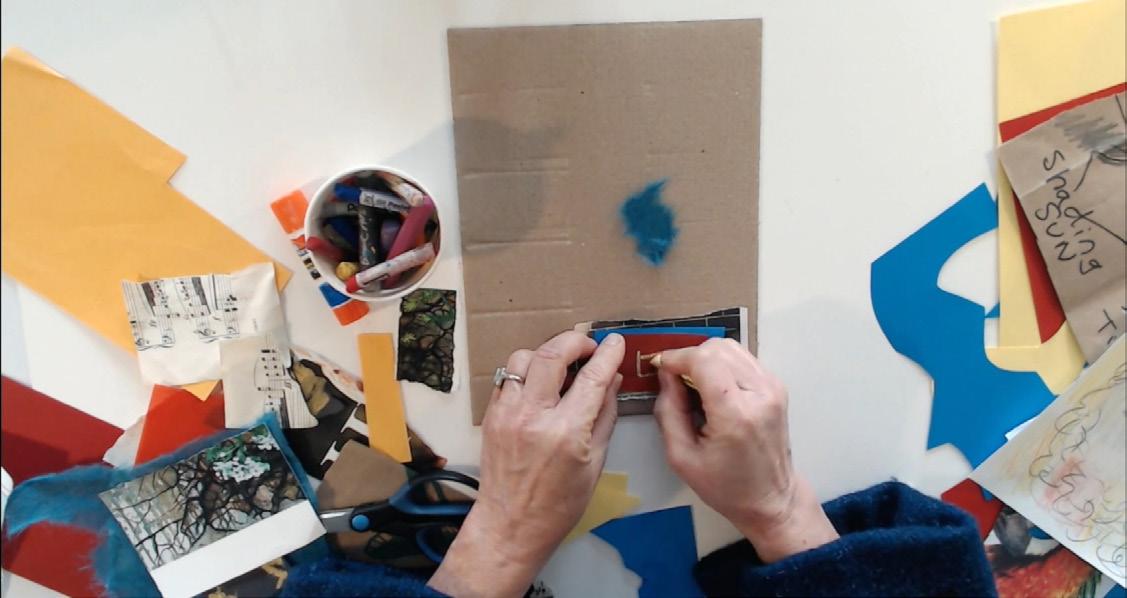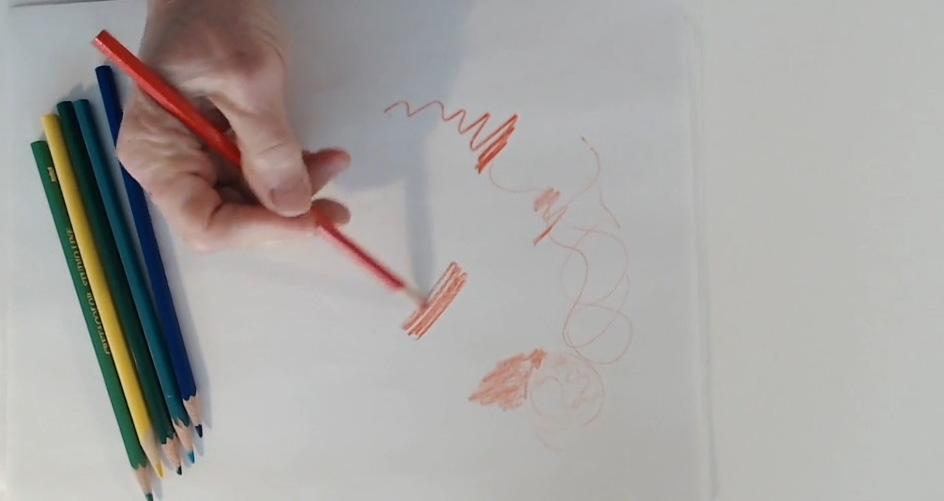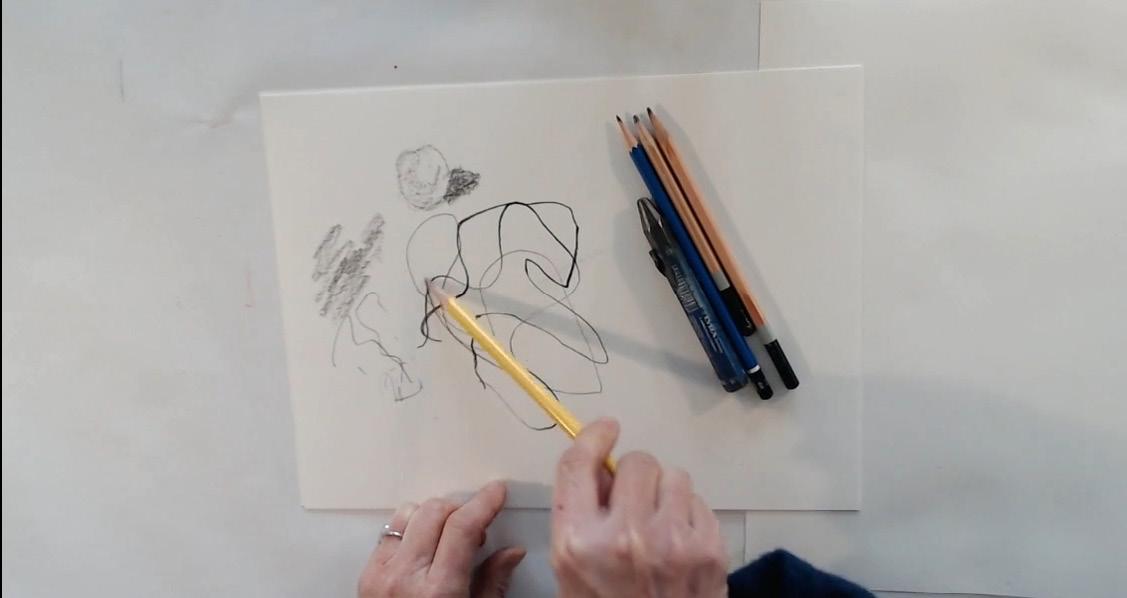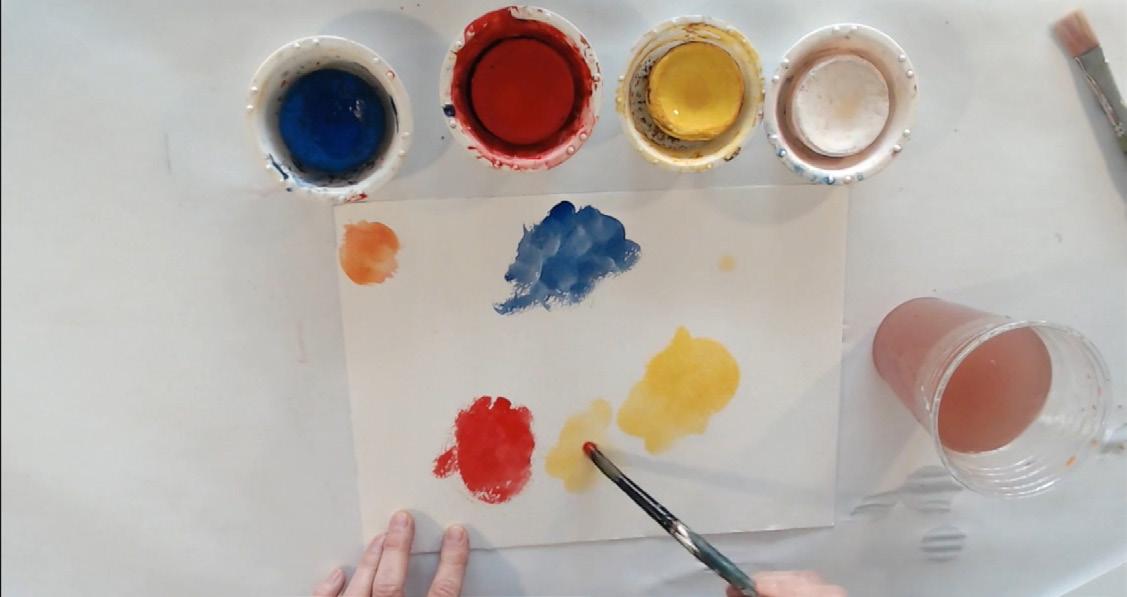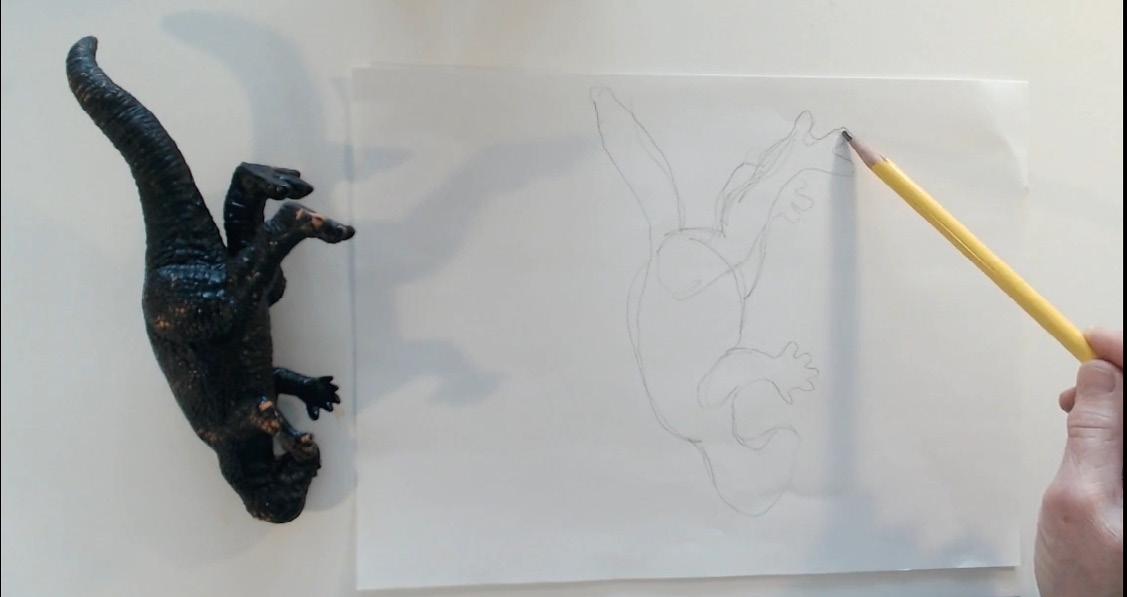About this Manual
Teaching artists are at the core of Youth in Arts’ work. We believe that students benefit greatly from your expertise. Students learn that they can make a life that involves following their passion, expressing themselves in myriad ways, and making change in their community by sharing their ideas in creative ways.
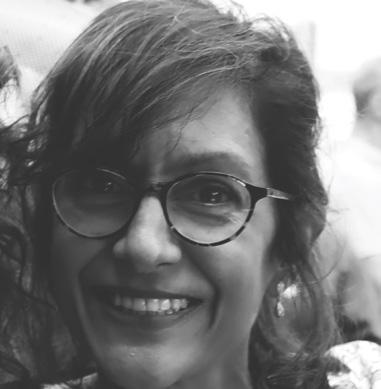
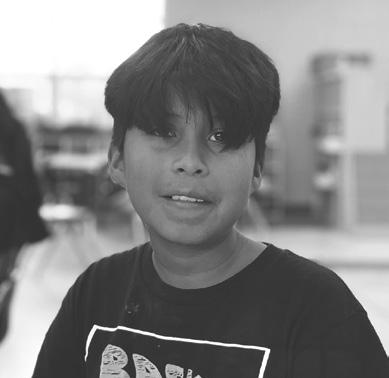


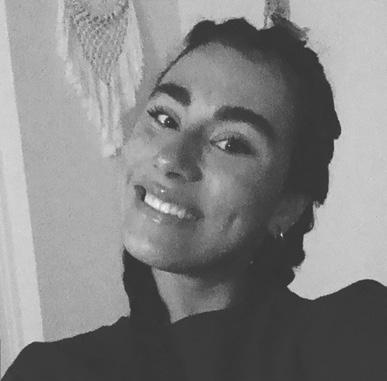


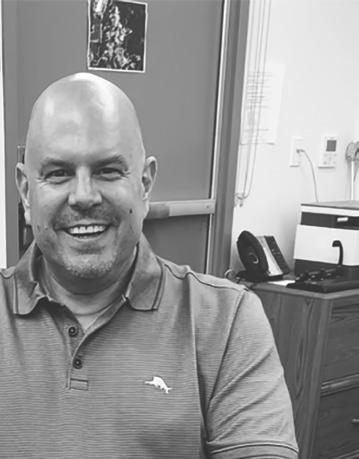

The following resource outlines ways to utilize your expertise to more fully make an impact on children and their families through sharing your artform.
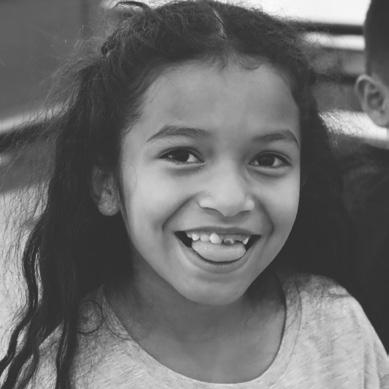
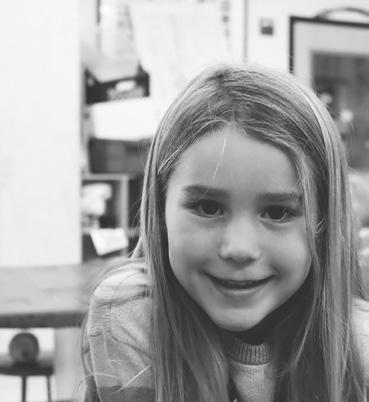

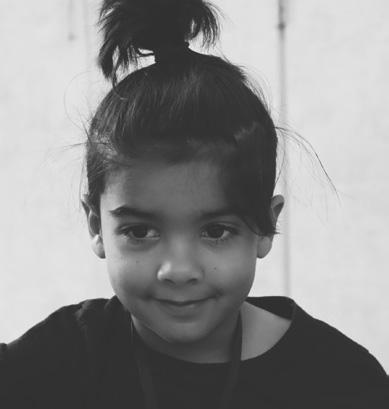
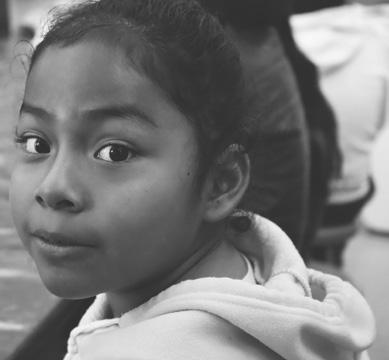

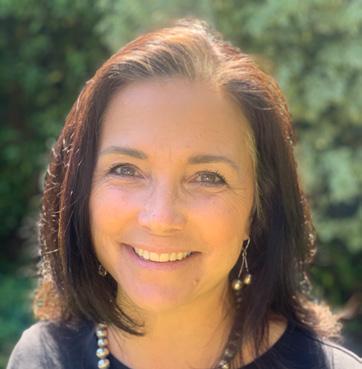
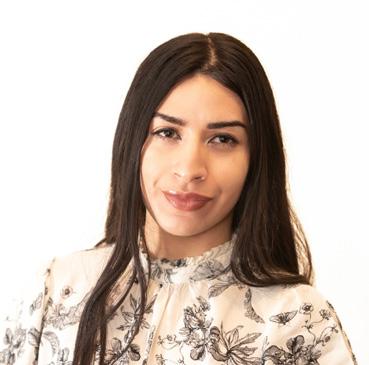
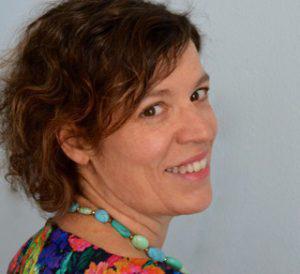
YIA Basics & Background
Administration & Other Programs
Kristen Jacobson, Executive Director
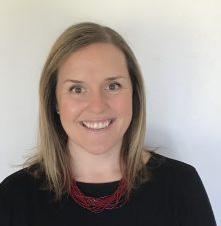

415.457.4878 ext 170 • kristen@youthinarts.org
• Organizational Questions
• Strategy and Planning
• Operations
• Board Development
• TA Payroll & HR Questions
Morgan Schauffler, Director of External Affairs
415.457.4878 ext 160 • morgan@youthinarts.org
• YIA Gallery
• Rising Stars HS Art Show & Inspire: Teaching Artist exhibit
• Sudent Exhibition Hanging/Artwork Management
• Donor & Board Relationships, Fundraising & Special Events
Austin Willacy, Director of ‘Til Dawn Teen a cappella

SLACK: Crowdsourcing and Community-Building
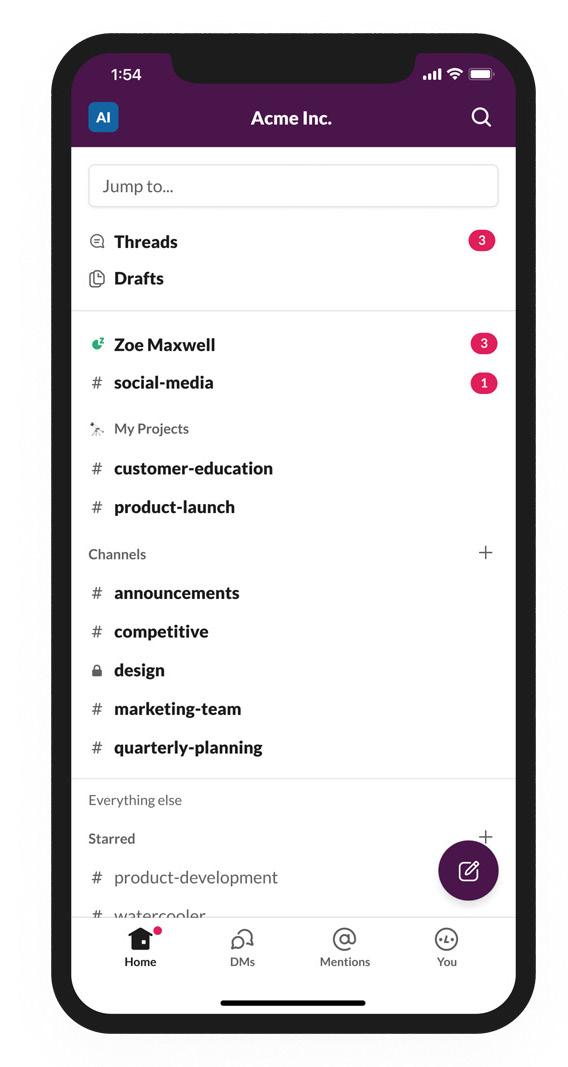
While email is our primary form of communication for work matters, you can also text us when you have more immediate needs. Slack works best if notifications are kept on. We use Slack in multiple ways:
• Share your successes with photos, videos and words
• Share resources
• Ask questions to other TAs and staff for issues you might be having in the classroom
• Communication: You can call and email YIA staff and teaching artists through SLACK.
Visit Slack here: SLACK YIA Teaching Artists Learn more about how to use SLACK HERE.
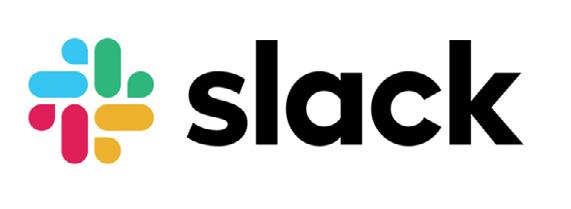
YIA Basics & Background
A Brief History of YIA
Youth in Arts was founded in 1970 by local arts advocates dismayed by diminishing resources available for arts education in California schools. In the decades since, our arts programs have served over a million students in their classrooms throughout the North San Francisco Bay Area.
We work with students from preschool through College of Marin. Youth in Arts became an affiliate of VSA (formerly Very Special Arts) in 1981 and we remain the only consistent provider of arts education for students with disabilities in Marin.
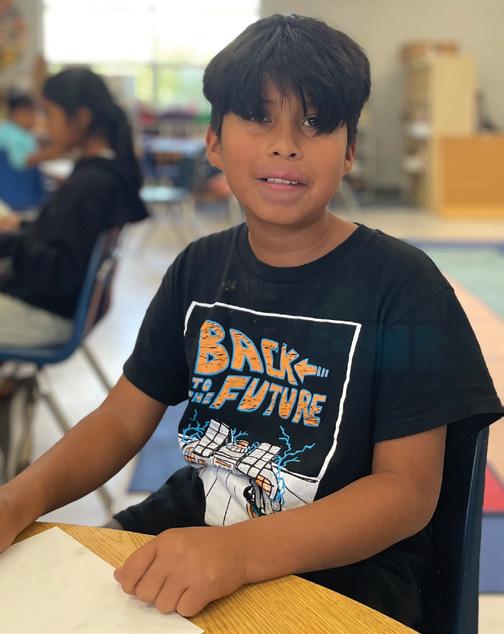
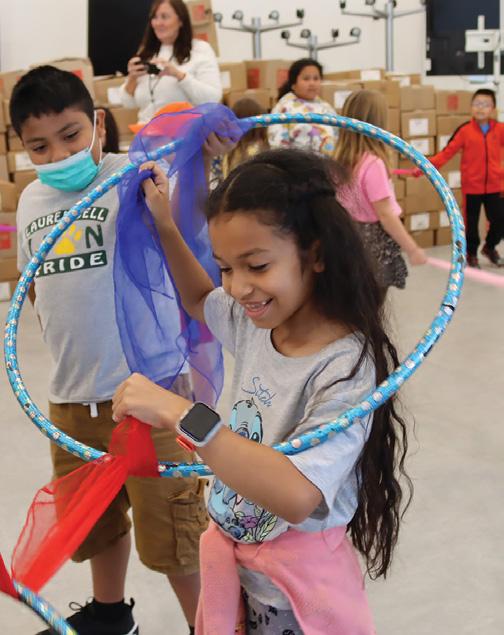
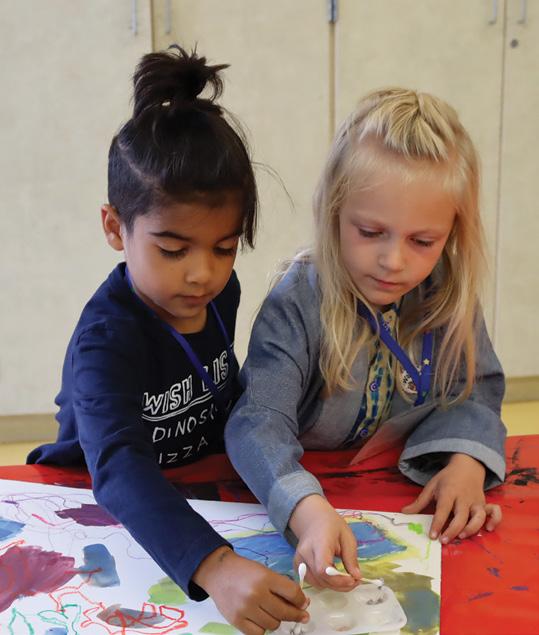
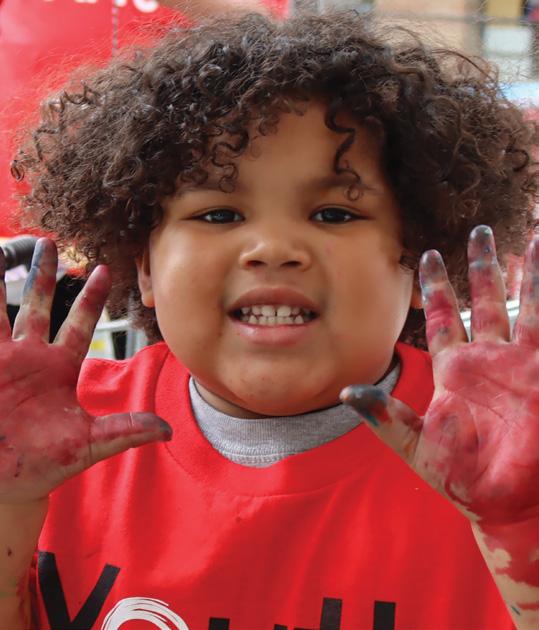
Youth in Arts founded the Italian Street Painting Festival in San Rafael in 1994 and produced the Festival for 16 years. Since 2011, the YIA gallery in downtown San Rafael’s Cultural Arts District has been dedicated to celebrating youth artists.
Click here for our board history
Youth in Arts is an Arts Equity Champion, leads the Marin Arts Now community, and is a proud member of Teaching Artist Guild and the Downtown San Rafael Arts District.
Commitment to Diversity, Equity & Inclusion
Marin County exemplifies the promise of prosperity that in reality is only achievable for its predominantly protected white cultural elite. Recent studies show Marin ranked as California’s most racially disparate county. The equity and achievement gaps between Marin’s 73% white residents juxtaposed to its nearly 27% of individuals in black, indigenous, persons of color (BIPOC) communities are staggering and untenable. Throughout Marin’s history a disproportionate culture of protected whiteness has resulted in on-going systemic issues impacting housing, economic opportunity, environmental health, and, of course, education.
The acute achievement gaps between students of color and their white peers continues to widen. As such, Youth in Arts (YIA) is recognized as a leader with a specific focus on equity, inclusion, and diversity over its 50 year history. YIA continues its work to break down the systems of white supremacy, privilege, and systematic oppression by asserting that participation in the creative process for every child impacts an individual’s worldview, development, and future opportunity.
As recent events continue to highlight issues of inequity, YIA is emboldened to recommit ourselves to amplifying the voices of the unheard and underrepresented. It is the implication of Marin’s systemic disparities as well as the on-going imbalance of privilege and power that remains the crucial center of our work, organizational culture, and mission. YIA will cultivate creativity in the hands of those intentionally left out of critical dialogue.
Organizationally, we will drive discussions of implicit bias, policies that support equity and unobstructed access for educators, administrators, and parents. We commit to seeking out teaching artists, staff, and board members from underrepresented communities, leading conversations and projects regarding privilege and power in our community. We will continue to build a network of advocates that look to arts education as a vehicle for social change. Art changes lives and amplifies voices.
YIA Basics & Background
YIA Programs At-a-Glance
YIA provides a high quality, student-centered approach to arts learning in the classroom. We match professional teaching artists with schools to create meaningful experiences in dance, music, theater and visual arts. With a diverse roster of artforms to choose from, we use a curated approach to bring impactful arts-based learning to meet each students’ needs.
Artists in Schools (AIS) Arts Unite Us (AUU)
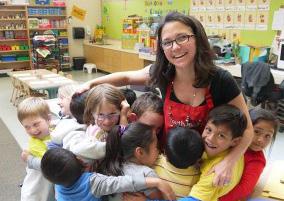
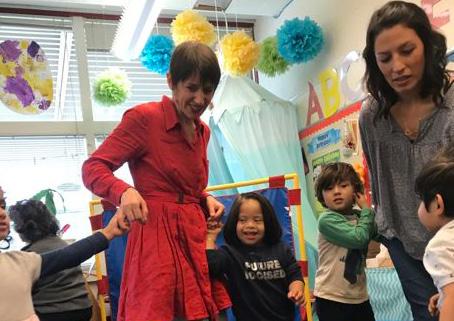
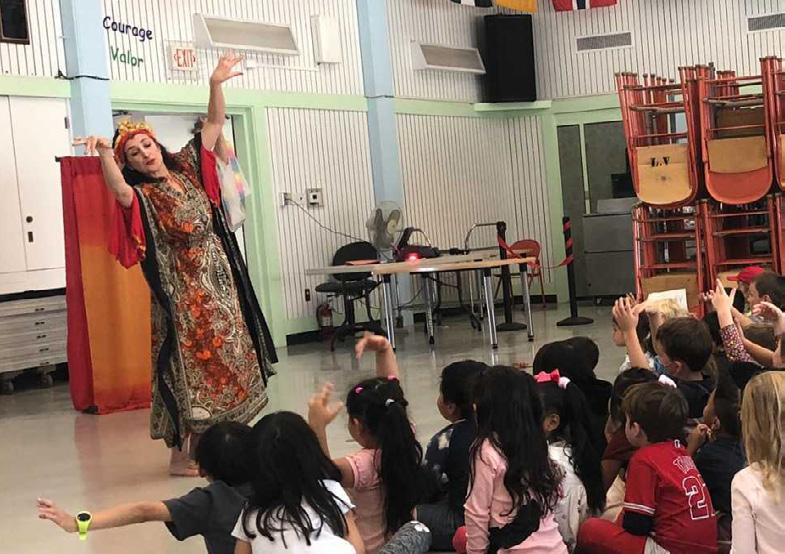

“Arts Unite Us” (previously VSA) provides opportunities for students with disabilities and different learning styles to share their creative voices. Programs include tailored residencies in special education classrooms culminating in “sharing sessions” for peers and family, and integrated residencies that engage disabled and non-disabled students in collaborative projects.
IFC began in 2013 with the Walker Rezaian Creative Hearts Program to celebrate Walker’s life and his love for the arts. Originally designed as a visual arts residency for kindergarten and first grade students, IFC now works with an entire elementary school. Students develop arts, design, and social emotional skills. Most importantly, children learn how to make and keep friends when they explore ideas like community, collaboration, sharing and empathy.
YIA Basics & Background
I AM (Intensive
Arts Mentorship) Programs
The Intensive Art Mentorship program aims to amplify the power in young artists ages 13 – 18 who are passionate about creating and sharing their ideas through the arts, to catalyze change in their communities. Students explore creative expression, engage in critical conversations, and create impactful artworks to share with the world.
‘Til Dawn
‘Til Dawn is an advanced a cappella vocal music program for motivated young artists. `Til Dawn celebrates the value of the arts, encourages positive messages about meaningful social issues, and inspires children of all ages. The group performs a mix of standards and contemporary hits, in addition to original songs by group members. `Til Dawn is a tuition-based program, but no student is ever turned away because of inability to pay.
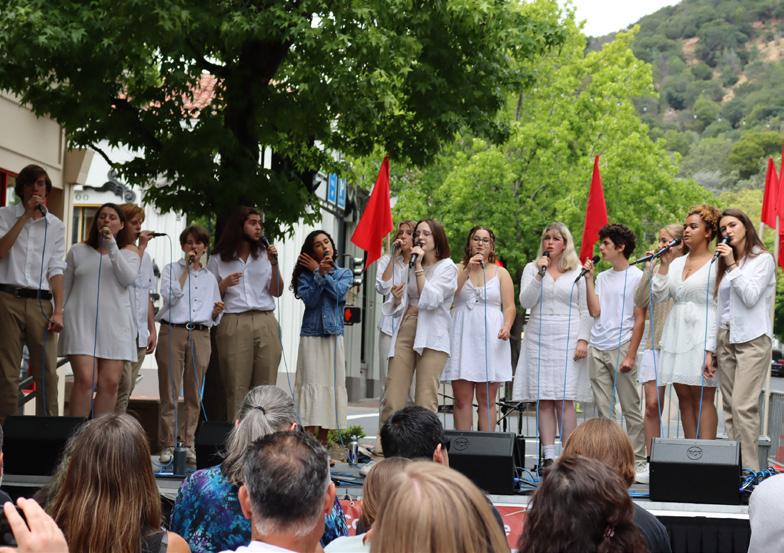
C Street project
C Street Project focuses on public art projects designed and created by teens with a passion for expressing themselves through visual and performing arts. Students apply for individual projects and work together to create public art for their community. Projects have included murals, plays, and monologues addressing social justice concerns in our community.
The YIA Gallery is dedicated to celebrating children as artists, to illustrating the impact of arts education for all learners, and to inspiring and providing opportunities for art making.
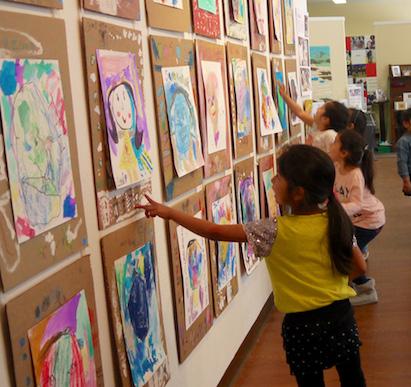
We are open to the public at no charge 11-4, Monday through Friday, with occasional evening and weekend hours for announced special events.
YIA GALLERY presents five to seven exhibits per year, most of which showcase the multi-disciplinary work of Youth in Arts’ students while also exploring the connection between Teaching Artists and the work of their students.
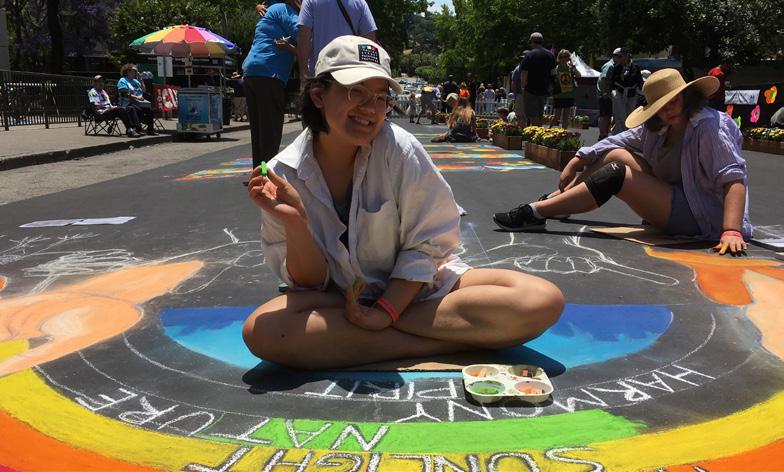
Children of all ages can visit our ART LAB space and create – for free –whenever we are open to the public.
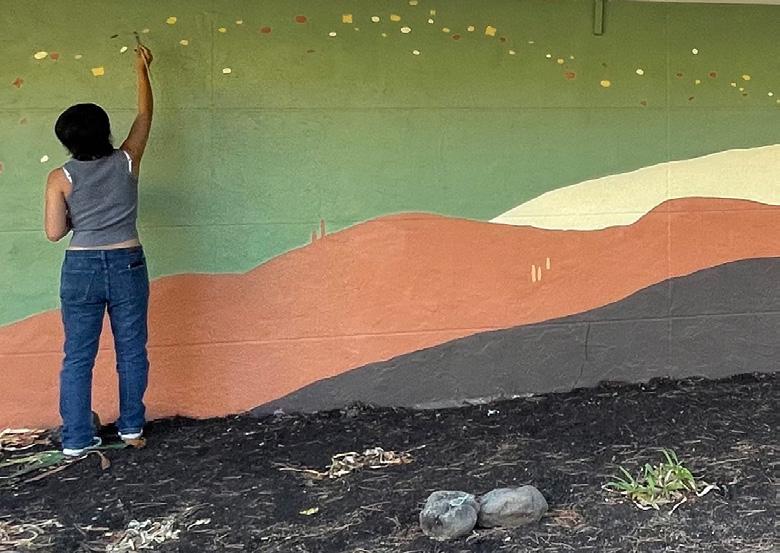
YIA Basics & Background
The YIArts.COR (Creative Online Resource) was developed as YIA’s digital and virtual resource during the school closures throughout COVID-19. Teaching Artists created hours of digital content that was provided to school sites and students in sequential and accessible means. As such, the YIArts.COR has video examples and ideas available for our current Teaching Artists to peruse and watch. It is FREE for our entire Teaching Artist team. Simply follow the link to the YIArts.COR
free account using
YIArts.COR
own username and password. You will find additional
YIA will be developing Teaching Artist training and development courses on the YIArts.COR. Stay tuned!

Mission
Youth in Arts builds visual and performing arts skills through innovative and in-depth programs that foster creativity, confidence, compassion and resilience in students of all abilities. We develop capacity among educators and teaching artists, advocate for equitable access to arts education and offer opportunities for youth to share their creative voices.
YIA’s Core Beliefs are Creativity, Confidence, Compassion
Youth in Arts has been a recognized arts education leader with specific focus on equity, inclusion, and diversity over its more-than 50 year history. YIA works to break down the systems of protected whiteness, privilege, and systematic oppression by asserting that participation in the creative process for every child impacts their worldview, development, and future opportunity. Great teaching in the ARTS includes:
• Offering students multiple modes of expression and encouraging multiple interpretations
• Teaching students to share their voice by performing, presenting, questioning
• Introducing students to artists of diverse backgrounds and abilities
• Posing good questions to encourage students to think critically and access their imaginations
• Encouraging students to critique and share
• Working with quality materials to build confidence in young artists.
Students become more resilient when they develop creativity, confidence and compassion.
Access to creativity enables youth to ask difficult questions of themselves and of the world, and gives them the confidence to speak up when they need to.”
and set up a
your
resources linked to the
in this manual.
YIA Teaching Frameworks
Three Frameworks Shape YIA’s Teaching Philosophy
YIA emphasizes 3 student-centered teaching philosophies as the ongoing framing of our work in schools and the community. They are:
Center Student Voice & Identity
1. - Social Emotional Learning
2. - Culturally Responsive Teaching
3. - Universal Design for Learning
Our goal is to provide students with the art skills and tools necessary to express themselves creatively, and to confidently make decisions independent of teachers, paraprofessionals, or other supervising adults. Creating something (an artwork, song, dance, monologue) that is wholly their own empowers youth to share their voice and to listen when others share theirs. In doing so, we are helping to build confidence, creativity, and compassion in our youth so that they may do the same in their own communities.

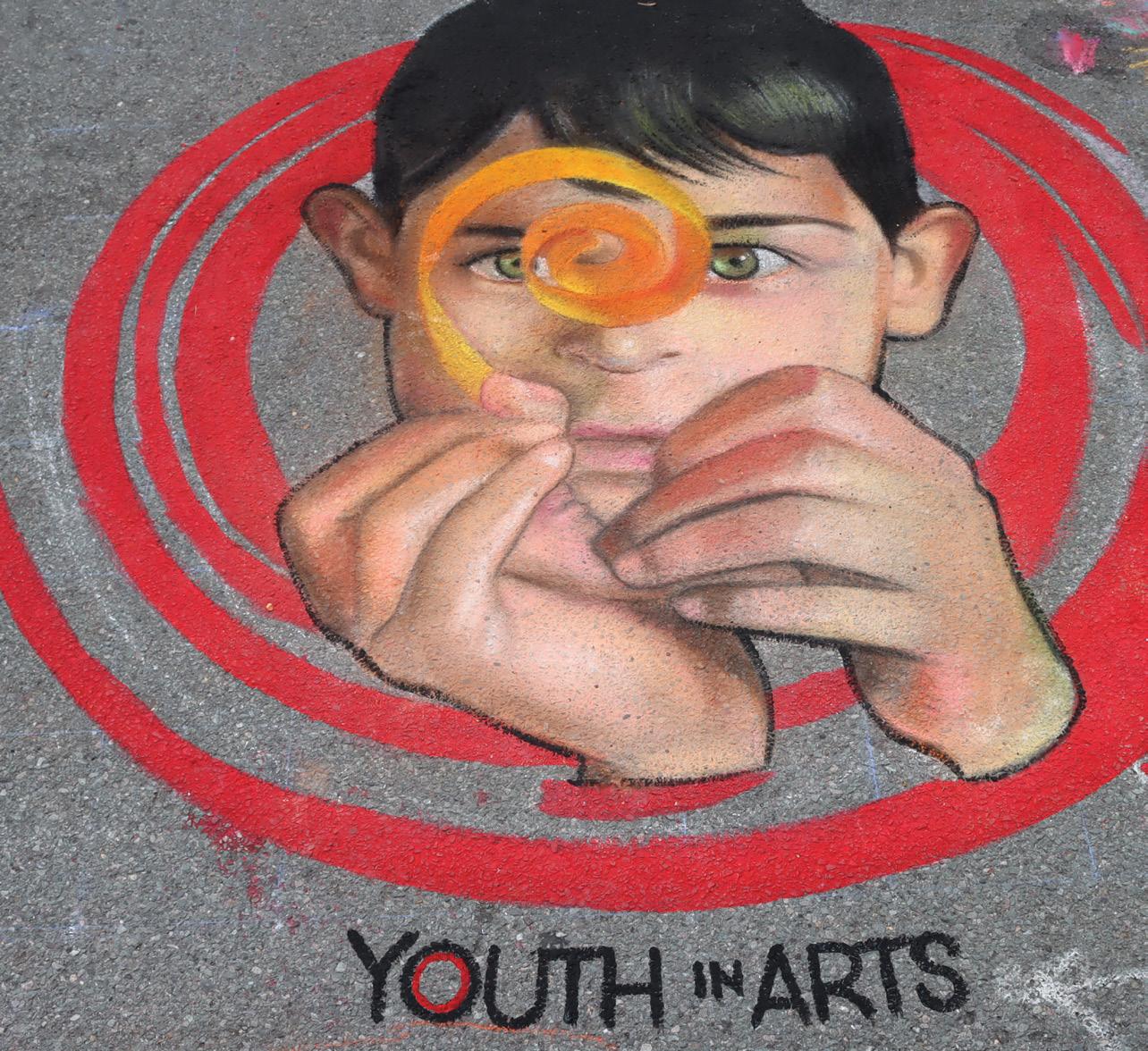
1. Provide students with opportunities to teach YOU about who THEY are.
2. Make curricular choices based on what your students share with you.
3. Explain yourself clearly and succinctly so that students will care about what you want to teach them.
(SEL) Social Emotional Learning: You probably already employ SEL strategies!
SEL through the arts is especially important now because after two years of pandemic learning (often in isolation) students are re-learning how to get along, share, collaborate, and how to be a friend. SEL has five parts, illustrated in the graphic from CASEL (Collaborative for Academic, Social, and Emotional Learning.)
YIA Teaching Frameworks
5 Key Competencies of Social Emotional Learning
(from CASEL.org)
SELF AWARENESS: Teach students to understand their own emotions, thoughts, values.
SOCIAL AWARENESS: Teach students about the diverse backgrounds and cultures of their community.
SELF MANAGEMENT: Help students regulate their thoughts, emotions and behaviors through the arts.
Social Emotional Learning
RELATIONSHIP SKILLS: Help students practice cooperating, working together, listening, sharing, seeking help and helping others.
RESPONSIBLE DECISIONMAKING: Teach students to make good choices and consider those around them.
Arts Education focuses on engaging in self-discovery, goal setting, and working alongside others. Social-Emotional Learning leads students through an awareness of self, processing experiences, understanding others, and making responsible decisions.

RESOURCE: YIArts.COR: Move, Groove, & Grow: Teacher’s Resource for SEL in the Classroom
RESOURCE: YIA’s Digital Toolkit: SEL
RESOURCE: Send kind thoughts: short video with child actors, a perfect warmup activity: Train Your Brain to Be Kinder
RESOURCE: SEL through the Arts Resource Guide
YIA Teaching Frameworks
Culturally Responsive Teaching
Culturally Responsive Teaching is a rich, intentional approach woven into every aspect of student learning. It focuses on the assets students bring to the classroom rather than what students can’t yet do. It raises expectations and makes learning relevant for all students. Culturally Responsive Teaching includes families and community in education.
Most teaching artists already include Culturally Responsive Teaching in their practice. Here are seven ways to be more intentional:
1. Learn and pronounce everyone’s NAMES properly. Do not substitute a nickname instead of learning to pronounce a name.
2. Provide opportunities for students to teach YOU. Learn from your students. It’s our responsibility to encourage students to lead.
3. Create lesson plans that reflect the culture of the students we teach.
4. Encourage the use of any language and/or nonverbal communication.
5. Encourage every student to make connections from their lives to the topic. Invite family members to share their experiences.
6. Use students’ experiences from any background to access prior knowledge.
7. Intentionally teach students how to collaborate. (We are a team, and teams work together. We each win when we all win.)
What Is Culturally Responsive Teaching? (n.d.). What Is Culturally Responsive Teaching? | Understood. Retrieved January 11, 2023, from www.understood.org/en/articles/what-is-culturally-responsive-teaching
BUILD COMMUNICATION: Encourage students to speak and create in all of their languages.
BE THE LEARNER: Encourage students to teach you about their lived experience, home culture and history.
SHOW AND EARN RESPECT: Call children and teachers by their name, practice pronunciation.
Culturally Responsive Teaching
CELEBRATE COMMUNITY PRIDE: Invite families and community into the classroom.
BUILD ENGAGEMENT: Encourage students to make connections to their life and background.
RESOURCE: Ten Innovative Ideas to Improve your CRT
YIA Teaching Frameworks
Universal Design for
Learning
UDL is choice-based pedagogy developed by CAST designed around brain science: how the different parts of the brain best activate during learning. When the brain is engaged, the student is engaged, reducing disruptive behaviors. UDL is made up of three parts aimed at increasing engagement for every student in the classroom. The three parts are:
WHY
Show and tell students what you want them to learn in the lesson (Your Learning Goal). Students engage better if they understand WHY they are doing something.
WHAT
HOW
Engage students with content that matters to them. Build buy-in by introducing students to artists, musicians, performers who look like them, fuse current and historical cultural trends with the art form.
Utilize tools and materials so that every student can practice, share and perform what they have learned. (Providing adaptations is key to making sure everyone can learn.) Allow time for students to share their learning with you and their peers.
UDL Universal Design for Learning
Based on neuroschience, how we learn CAST (2018). UDL and the learing brain. Wakefield, MA: Author. Retrieved from http://www.cast.org/products-services/resources/2018/udl-learning-brain-neuroscience
Strategic Networks
Affective Networks
“How” “Why”
HOW will students show what they know? How will you know if students understand? Offer multiple ways of expression.
WHY will students want to engage? What materials, tools, music etc. will catch and hold their attention?
Recognition Networks
“What”
WHAT will students use to learn (tools, materials, etc) Providing choices is key to making sure everyone can learn.
Design a Successful Arts Curriculum
Follow
the Creative Process
Repeat this five step process in each arts class. As you see that students understand the first part of the lesson, you can add a next step and follow the same pattern.
The creative process mirrors the scientific method or the engineering process and sets up structures for emerging artists to question, iterate, and reflect on their work. The creative process is an excellent structure for lesson plan design.
Plan your YIA Curriculum
DESIGN
A SUCCESSFUL ARTS CLASS
1: What do you want your students to KNOW (What is your Learning Goal)?
2: Fill in your ROADMAP for a general overview.
3: Add MORE details with the Lesson Planning Table.
BEGIN AT THE END: What do you want your students to know?
1. Make clear LEARNING OUTCOMES that you will follow.
2. Decide HOW you want to share the residency’s final learning with friends and family.
3. Now plan backwards, considering what students will need to learn at each lesson to be able to do the next lesson.
4. Use the YIA Roadmap to collect your ideas.
5. Use the YIA lesson plan template to flesh out each lesson.
Build communication and collaboration into your lesson plan by:
1. Facilitating an opening check-in. Conduct regular rituals including introductions to the space and community and content.
2. Creating opportunities throughout the lesson for mid-process check-ins.
3. Limiting the number of tools or materials that are available so that students are required to practice sharing and must communicate their needs with their peers.
4. Enabling students to create works of art reflecting their own voice and cultural identity.
5. Encouraging students to present their artwork to their peers, and utilizing discussion-based critique methods to empower students to share their opinions.
6. Leading reflections - both individual and group - for students to share thoughts, feedback, emotions. Reflection can be verbal or non-verbal.
7. Requiring students to participate in clean-up at the end of each session.
Use the Creative Process to Facilitate your Class
BUILD AN ENGAGED ARTS EXPERIENCE
Connect
Smile, share your love of your art form. Help kids love the arts and use the arts to share their voice.
Show Respect by learning students’ names. Ask YIA for labels, and teachers to help.
Follow a Consistent pattern with every classs, and always be prepared to change gears when interest wanes.
Know your Learning Goal, Connect back to it, make sure each lesson relates.
Design and keep to a class structure that best suits you, your students and the schools where you are teaching. Students will respond more positively when you are consistent and reliable. Every teaching artist’s class structure will be uniquely their own, but the following is a class structure we at Youth in Arts have found to be most successful.
STEP 1: Prepare - Students, Material, Content
Students will feel safer and engage more fully if they understand what is expected of them.
1. Arrive at school with adequate time to set up and troubleshoot (at least 15 minutes).
2. Write the learning goal and the day’s lesson steps on the white board.
3. Make students feel welcomed, seen, and heard when they enter class. You could:
a. Wait at the door, have each student say hello and tell you their name, give you a fist or elbow bump and ask them to go to the rug or table
b. As students enter the room, ask them to find and clip on their name tags. (Ask teachers to help until students understand routine)
c. Ask everyone to take three deep breaths together, make eye contact with every student.
d. Classes can begin with a check-in to gauge classroom climate. Check-ins can be multimodal and often take the form of a personal story, a physical warm up, a song, or a quick drawing.
4. Introduce the lesson. Start each class by telling and showing students what they will be learning. Include examples by artists with backgrounds similar to theirs when possible (photos, video, slides, music). Create a safe and welcoming environment and encourage students to respond and participate in the introduction.
a. Students pay closest attention if you limit your speaking to less than 1 minute per age-year of student. For example, 5 minutes for Kindergarteners (age 5), 6 minutes for first…9 for 5th graders (age 9).
b. Your job as the Teaching Artist is to set up the lesson so that students know and understand the task at hand. Ask open-ended questions to encourage dialogue:
• Students build language and vocabulary
• Students practice listening and speaking
• Students will “teach” you more about themselves.
A Learning Goal is a sentence describing the unit’s or day’s hoped-for outcome, written in words your students can understand.“
Use the Creative Process to Facilitate your Class
STEP 2: Create
1. Demonstrate the first part of the day’s activity, break down how materials or tools are to be used, where to find materials, etc.
2. Structure this part of the lesson so students work individually or in a group to start making creative choices.
3. Clarify instructions, answer questions, and support student decision making about their work and the process.
4. Set clear parameters for students’ work such as time limits and expectations on group work.
STEP 3: Perform/Check for understanding
Give students an opportunity to express themselves in the moment. This can be as explicit as asking students: “How did that exercise make you feel?”, “Take a step back. What do you see?” or “What happens next?”
1. Students share their work. In a performing arts class, this may look like sharing their dance or music individually or in a small group. For visual arts students this may be finishing a draft of a composition, sharing their work with a classmate.
2. Create opportunities to reinforce the concepts of safe space and community of caring practices.
3. Set up expectations and structures for students to routinely share their work with each other with respect, patience, grace, and caring. Model and demonstrate how to ask questions about work and how to respond in kind ways with kind language and words.
4. When working with students who may or may not be verbal, mid-process check-ins might be as simple as taking a step back to read the facial expressions or physical acts of engagement of the students.
STEP 4: Respond (Edit/Refine)
1. Artists can edit and refine their work if they are continuing to develop their work.
2. Help students to consider what is essential in their artwork. This is an important step in the creative process that asks students to think critically about their own work based on feedback or their own feelings. Like an engineer or scientist, Teaching Artists guide students to iterate on their work as they drive toward a final piece or product.
3. Create go-to routines in your classroom for students to edit and ideate on their work. With visual arts, writing or composition, this can be on-going drafts and copies. For performing arts, use technology (recordings on phones or ipads) or written notes or notation of movement or dances. Model strong editing routines that students can carry with them and connect to other processes or subjects.
STEP 5: Reflect/ Closing Ritual
Finish each class by bringing everyone back together for a quick closing, student demonstration, or reflection based on the lesson’s Learning Goal. The closing or reflection ritual creates a rhythm and standard practice of reflecting in real time. It can also provide you, the Teaching Artists, with authentic assessment regarding student sentiment, morale, engagement, and learning in the classroom. It is critical that students have ample opportunity to reflect on the journey.
1. Teach students to take care of their own needs. Show them how to use instruments and materials, how to care for them, where to store and clean them when appropriate. Students develop confidence and pride if you give them autonomy and independence in arts class.
2. An reflection ritual in your class could be:
a. Clean-up is completed, students are finished working.
b. Everyone moves to the rug/circle.
c. Offer a time to journal about feelings or thoughts individually, or time to do a pairshare.
d. Make sure that everyone is fully engaged with the listener (ACTIVE LISTENING).
RESOURCE: YIA’s Digital Toolkit: Reflection MORE ON REFLECTION IN THE ARTS ROOM
Classroom Engagement
Students disengage (act out) when they don’t feel safe, don’t understand or don’t feel heard. Design classrooms and lessons with the intention that everyone will be able to understand and participate. When more students engage, behavioral issues drop.
Fundamentals for Creating an Engaged Classroom

• Learn students’ names. Greet every student by name every class as they enter if possible (ask for name tags if needed).
• SHOW, MODEL, PERFORM instead of talking whenever possible.
• Know your SPACE, and how you want everyone to move through it. Changing physical space helps change emotional space and re-engages students.
• Set a clear routine for every class and follow it. Begin and end each class in the same way.
• Go in with a plan (lesson plan and road map). Write clear instructions with numbered steps and images to help visual learners. Point to each step on the sign while demonstrating the technique.
• Align with school behavioral expectations, making teachers your allies.
• Find that rockstar teacher, and follow their lead. Ask them for help if your strategies are not working. Watch the best teachers.
• The classroom teacher can help with students who need extra behavioral support like preferential seating (IEPs, trauma, covid disruption).
• Watch your pace, pay attention to the movement of the whole class to be sure you are moving the lesson forward.
Enter the classroom with a strong plan with good intentions
• State the Learning Goal, post it in the room. Post clear classroom expectations, reinforce and refer to them as needed.
• Make signs with lettering clearly visible from the far end of the room. Make sure that every student can see your hands and the materials during demonstrations.
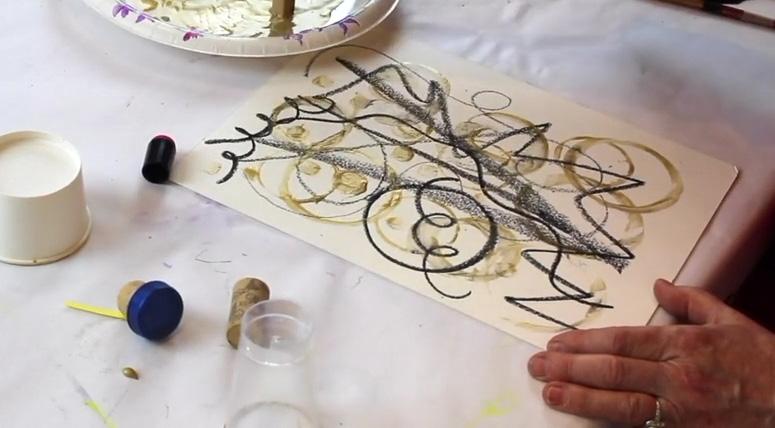
• Break lessons into manageable 5-10 minute chunks
• Speak slowly, loud and clear. Be direct, give students time to process each step.
• Use a microphone whenever possible. Our performer’s voices are not adequate for a person with hearing aids.
• Use only essential words: “Please sit down now” instead of “would you mind,” “could you please.”
If a student is not learning, not participating, or is causing disruptions there is a flaw in the lesson, not in the student.”
Classroom Engagement
Be ready to pivot when students don’t understand
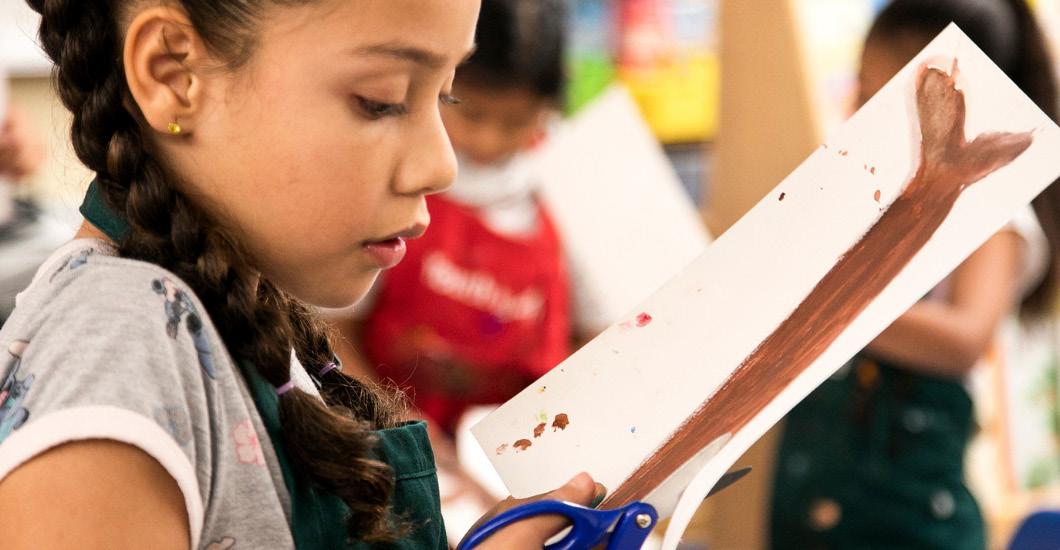
• You are a performer! Be energetic and show excitement.
• If you say the same thing twice, and students do not engage, say something else. Think about every word you use, what you really need, and then say it in a different way, and slower.
• Demonstrate the concept in another medium.
• Break the lesson down into smaller chunks if needed.
• Find different onramps into the content.
REFLECTION: The way you end a class is as important as how you start it.
Participation can be with words, sounds, movement
• Reflection offers students an opportunity to speak and share their opinions.
• Reflection can take five minutes or 15. It can look different for every class, but students should know that they will be able to interact every week.
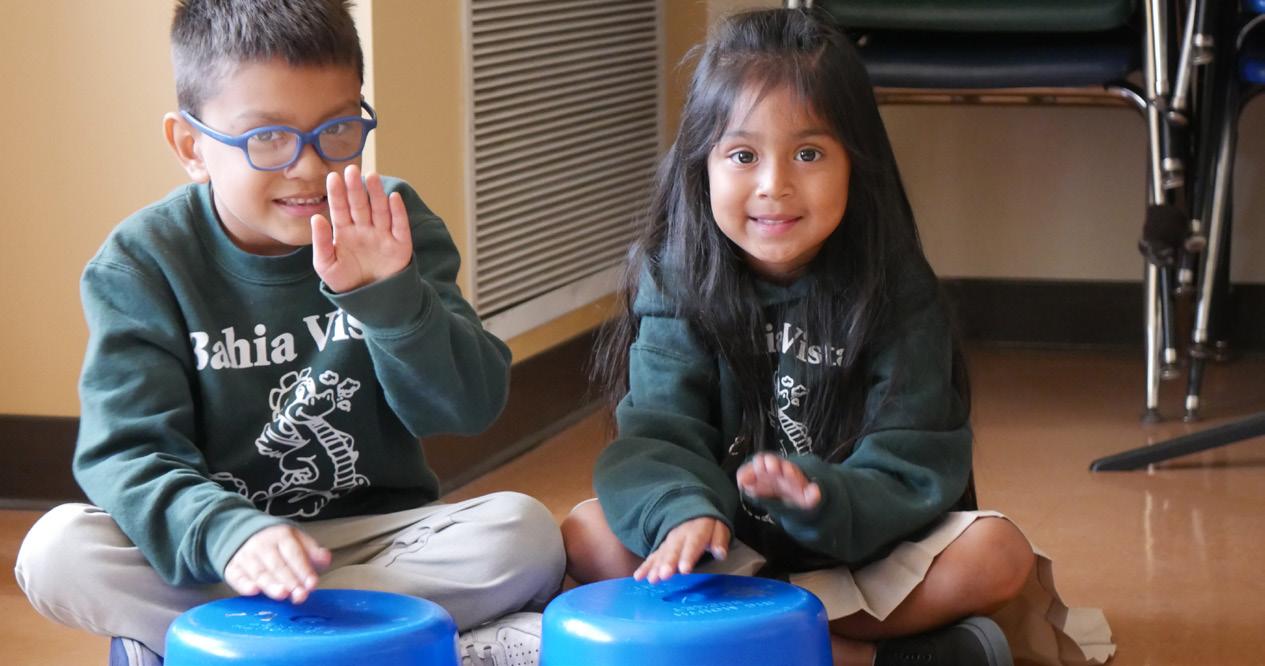
• The goal is to get every student interested in sharing their ideas.
Most Importantly, all students deserve our respect
You will improve classroom dynamics as soon as you learn students’ names. you could:
• Ask students to write their name in the lower right-hand corner of their paper. For pre-writers, ask the teacher to do this with ghost lines for students to trace over.
• Use the YIA-provided name tags. Every time you speak to a student, look at that name, say it out loud, and make eye contact. Don’t worry about pronunciation, the students will help you.
Positive Strategies for Reengaging Students
• Avoid a deficit vocabulary (good or bad), and focus on what is possible.
• Use the school’s rewards systems! Classroom teachers can help you during class
• Assign helpers for each class – every student
• Model how you recover from your own frustration or small failures: change gears, take deep breaths, shake it out, etc.
• Give attention-seekers additional jobs to keep them busy
Accessibility
Everyone in your classroom will learn and engage more fully when you consider the learning needs of every student. There is usually someone in your classroom who:
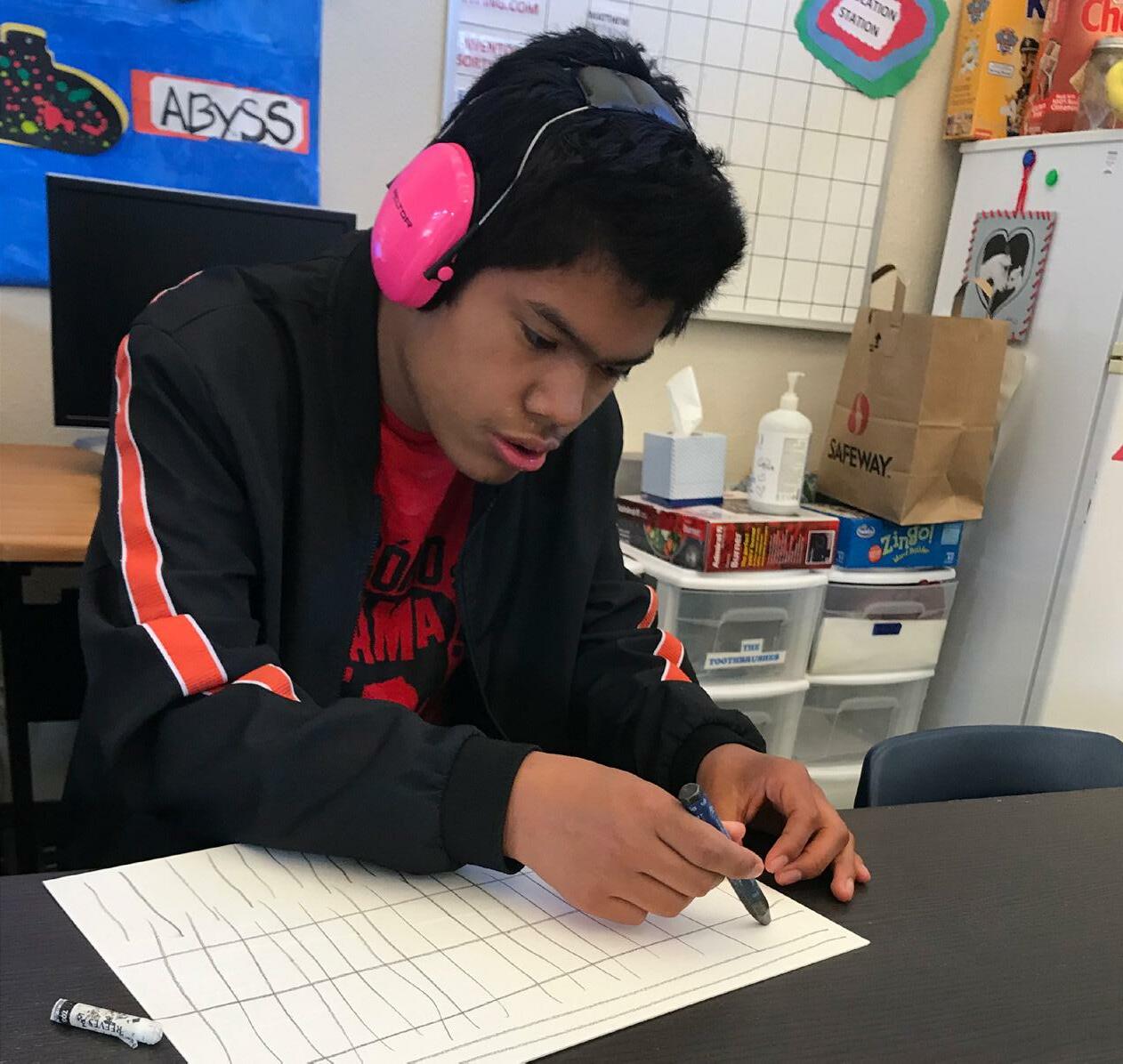
• Is blind or needs glasses
• Is deaf or hard of hearing
• Is learning English
• Uses extra time to process information
• Uses a wheelchair or will participate from a seated position
• Is learning to read
• Has sound/light/tactile sensitivity (seeking or avoiding)
Adaptive Tools
At Youth in Arts, we use adaptive tools to give students choice, independence and flexibility when making art. Here are a few examples:
• Handles made from plastic bottles: attach scarves, ribbons, shiny streamers to encourage movement in dance or music class.
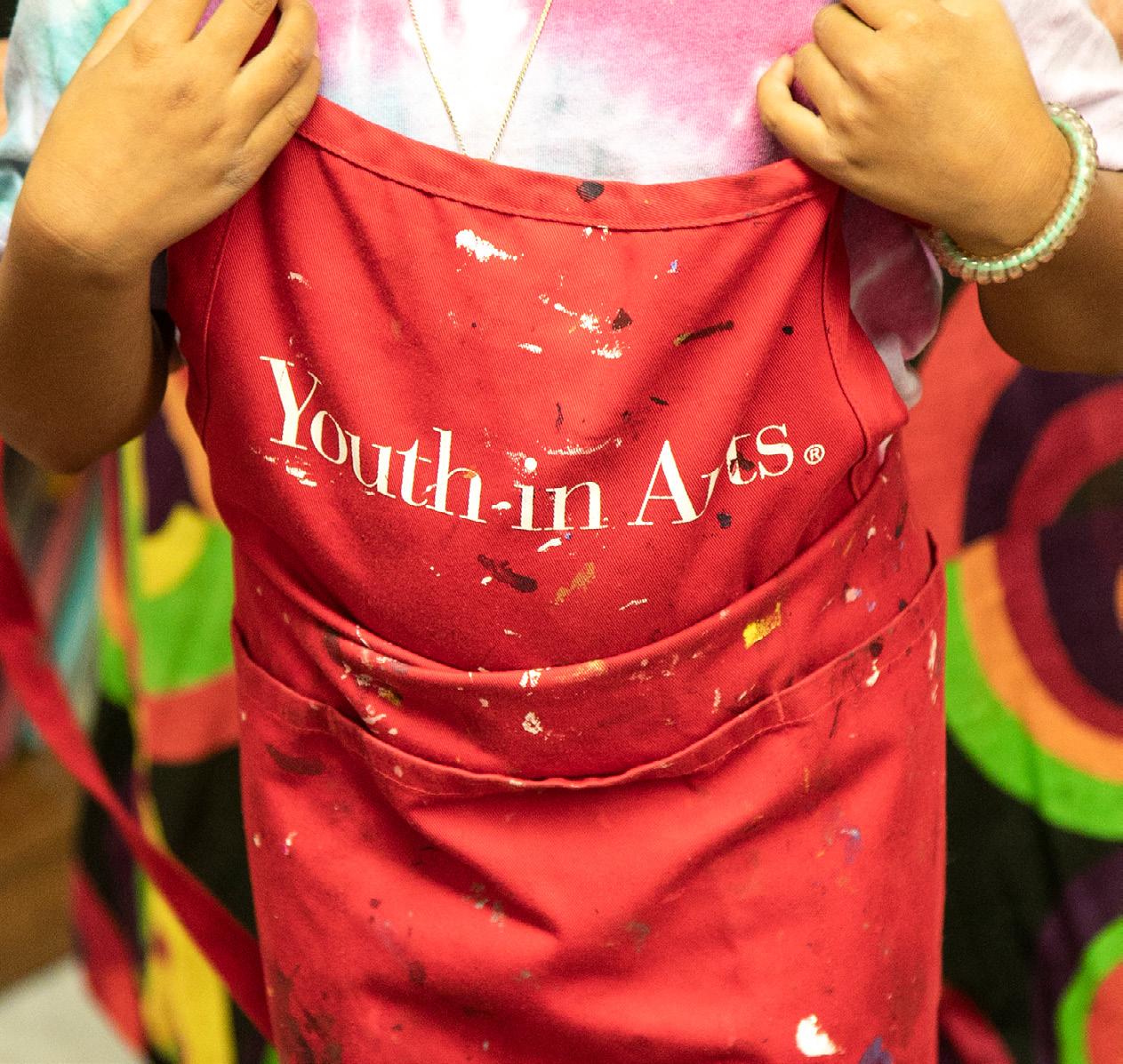
• Paintbrushes: two handled or a regular brush nestled in a soft ball. Both are easier to grip than a thin paintbrush.
• Rollers: easy to push through paint for mark making. Since some students prefer to keep their hands dry, rollers with handles enable students to move paint without having to touch it.
• Mason Jar Lids: used for tracing circles. This encourages hand eye coordination since students have to hold the jar lid with one hand and trace with the other. Also used for stamping paint.
• Large Oil Pastels and Paint Sticks: easier to hold than smaller crayons, and because they are softer, more pigment on the paper makes darker marks. Can be used dry or blended with water, offering more flexibility to the artist.
• Instruments and Props with special handles: Helps more students to participate.
Teaching Supports and Check-ins
Professional Development Opportunities
You will be required to attend training and development sessions to teach with Youth in Arts. You will be compensated for attending.
Youth in Arts will alert you to important professional development opportunities through Slack and through email when appropriate. For opportunities outside of YIA, you will be responsible for the costs. We may be able to help you find grants and scholarships to offset costs.
Class Observations
Observation and feedback offer opportunities for TAs to refine teaching practices and learn from each other. Staff and teaching artists will periodically drop in to classrooms: to observe and photograph teaching artists at work, and help when requested. We refer to the Teaching Artist Observations Feedback Form when we visit classrooms, and share the feedback as soon as possible so that we can address any potential challenges in a timely fashion.
If any issues arise in your classroom, please reach out to YIA via email or Slack as soon as possible. Small issues can grow quickly, especially when related to communication.
Informal Check-ins
MORE ON TEACHING ARTIST OBSERVATIONS

RESOURCE: Teaching Artist Observations Feedback Form
Teaching artists are always welcome at the YIA studio/office/gallery at 917 C Street, San Rafael. Please feel confident knowing that we are here to make your teaching experience positive. Let us know immediately if you feel you need additional support or teaching tools in your classroom. There is generally someone in the office from 11-4pm M-F. Please call to confirm that the person you want to see is there when you need them.
Slack:
There are many threads in Slack, and we encourage collaboration through the site. Include photos, videos, questions, concerns where information would be best if crowdsourced. You can create your own Tricks Toolbox for engaging students, and use Slack to crowdsource tools and ideas from each other.
Teaching Supports and Check-ins
Photography: Documenting our work
Please take photos and/ or videos when you can! Add them to the 2022-23 Photos folder on Google Drive. Be sure to put them in the correct school folder so that we can request permission to use them in published materials if needed.
Try to take 3 to 5 per class project, send us your best. Closeups of one student or a few making art, problem solving, etc is ideal; group shots of students dancing, etc are also good. Contact YIA if you would like a photographer to visit your class for a specific project. We will try to find a volunteer photographer to join you.
If we choose to use a photograph in any external document, we will contact the school directly for permission.
THE ARTS BANK
(Art Resources for Teachers and Students) is a free, online searchable database offering innovative ways to approach IEP goals through a creative lens.
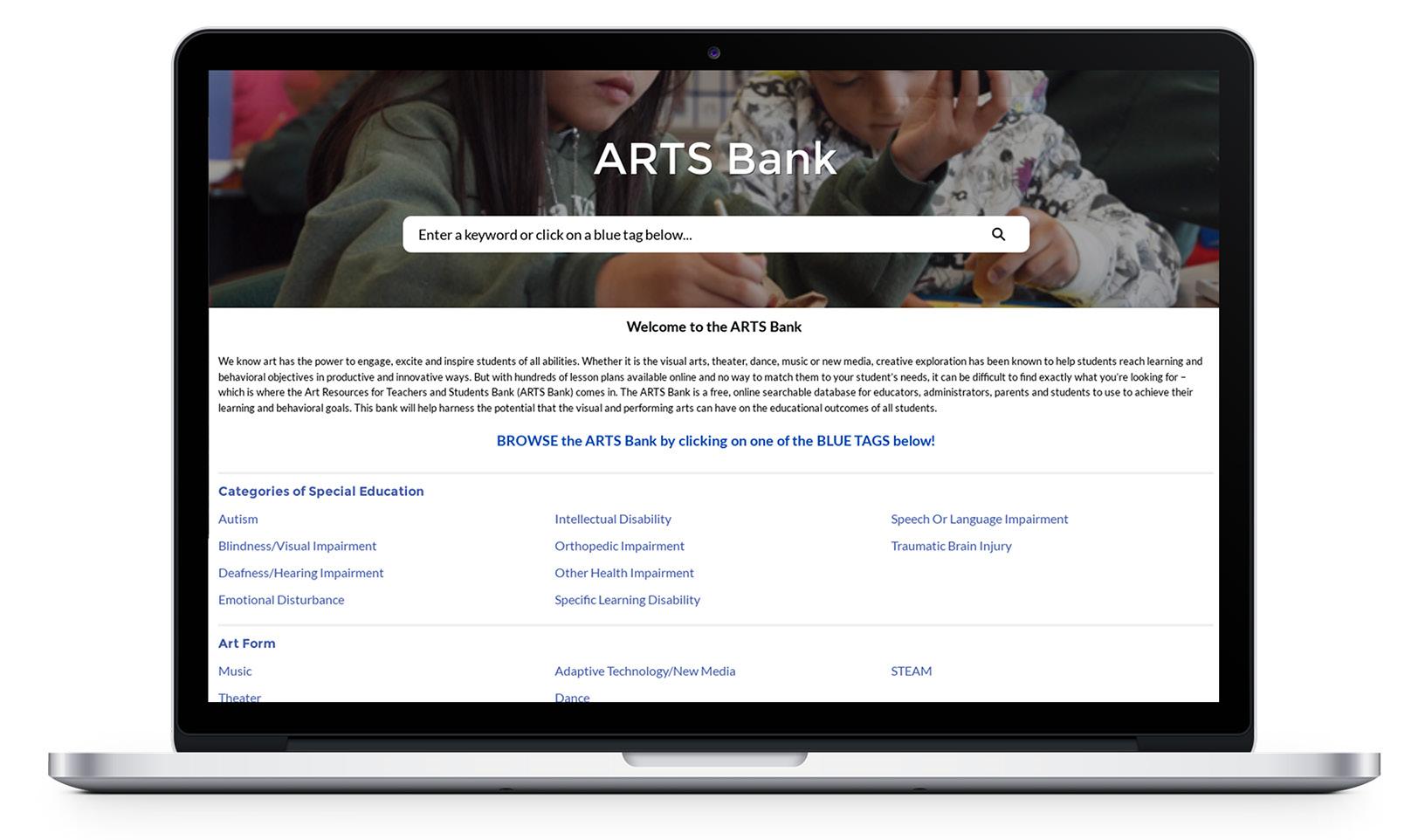
SEARCH
by Age, IEP, Disability, Artform
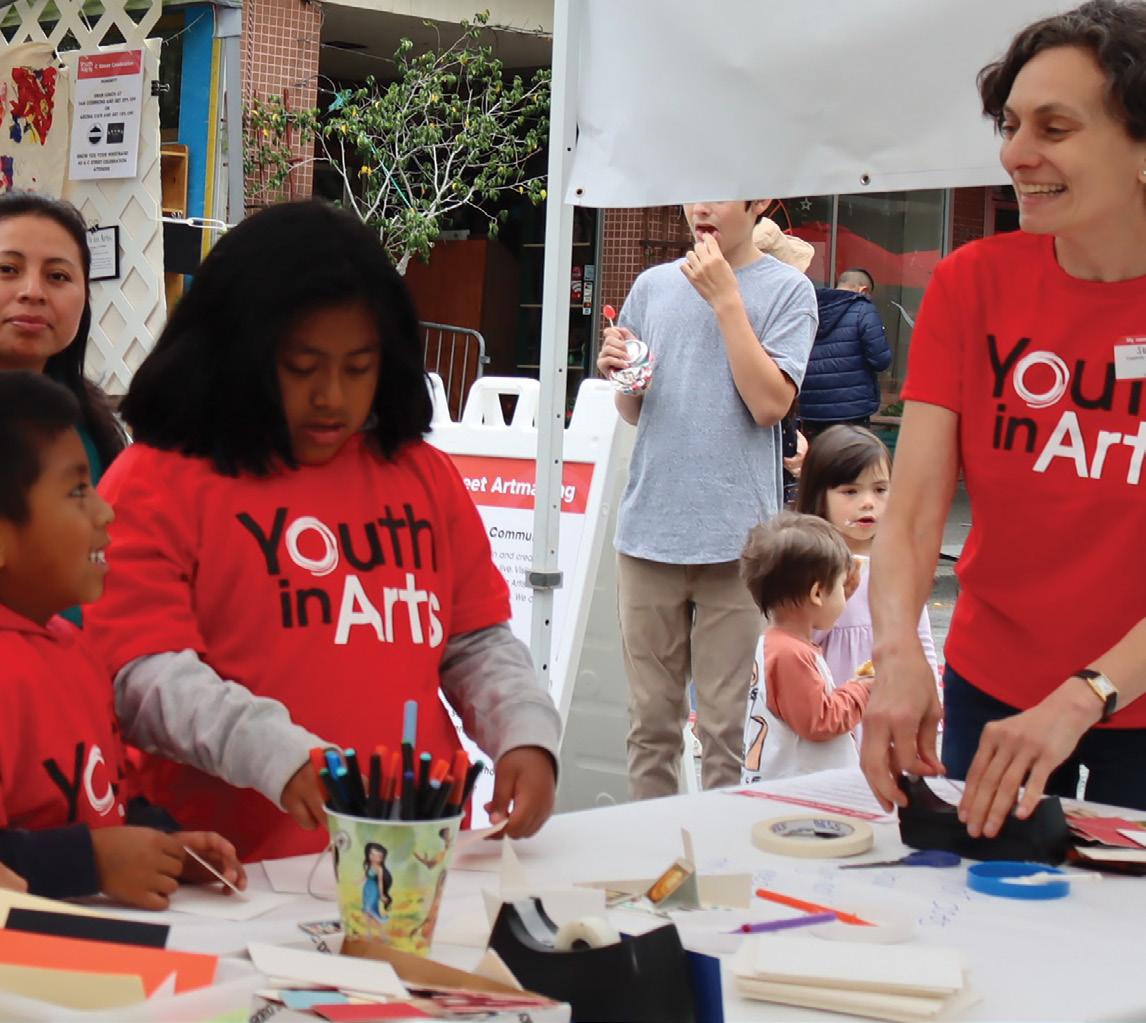
FIND
Activities, lessons, videos, links
YIA Human Resources Information
In 2020, California passed Assembly Bill Number 5, which narrowed the definition of the type classification a Teaching Artist can hold for their engagement with an organization. According to this law, all Teaching Artists are classified as employees (NOT contractors) with Youth in Arts. This means that artists are compensated hourly or by salary (depending on their individual employment agreement with the organization). State and federal taxes, workers compensation, unemployment, and social security are withheld from each paycheck and also paid by the employer.
At this time, Youth in Arts does not work with any artists as Independent Contractors unless the nature of the work is far outside the scope of daily activities (arts education instruction and workshops, advocacy, professional development, etc) that occur as part of the current model with the organization.
Required Forms for Employment
As an employee of Youth in Arts, there are a number of required forms and procedures that are necessary before you enter the classroom.
These include:
• YIA Employment Agreement: When you are brought on as an employee of YIA, you will be provided with an overarching agreement of your employment. This is a standard document that will outline your starting RATE OF COMPENSATION as well as articulate your At Will employment with YIA. Please take time to review this document and save it in your records. You will only receive one of these documents at the start of your employment. You can always request a copy from the organization. This agreement will come via PandaDoc, our online signing platform.
• Online Invite to Gusto: Youth in Arts uses Gusto as its online HR and Payroll platform. To receive compensation, track sick days, and store all of your information, you will receive an EMAIL INVITATION to Gusto when you signon with YIA. Gusto will give you access to see, review, and edit your information and tax withholdings at any time. You are responsible for your account and login information; however, you can always request a password reset from the team at YIA.
• W4 Via Gusto: On Gusto, you will be able to complete a W4 form that will determine your tax withholding for both state and federal. You can update this at any time.
• I9 and Forms of Identification: On Gusto, you will also be able to complete your I9 that confirms your identification and address. Listed on the I9 are also forms of identification that we need to keep on file. These include (but are not limited to) a current passport, drivers license, social security card, or state identification. We will need to make copies to have this on file.
• Direct Deposit: It is the policy of Youth in Arts to compensate all Teaching Artists via direct deposit to their bank accounts via ACH. As such, you will need to complete Direct Deposit information on Gusto providing us with your bank account and routing numbers.
• Live Scan Directions and Form: Live Scan is an inkless, electronic means of capturing fingerprints in a digitized format. Fingerprints are transmitted to a California State repository and results via a background check (assessing criminal and sex offendor records) are sent to the organization via th DOJ in Califronia. Each Teaching Artist will need to complete a Live Scan BEFORE you head into the classroom. Please make your appointment at a Live Scan facility near you (find locations at https://oag.ca.gov/fingerprints/locations). Bring a copy of your CA Driver’s license to the appointment as well as the YIA Request for Live Scan form (provided during onboarding). The fee for the Live Scan will vary from $52-80 depending on the location. YIA will reimburse this fee; please save your receipt. Directions will be provided to you and saved on Gusto.
YIA Human Resources Information
Required Forms for Employment (Cont’)
• California State Education Code prohibits the employment or retention of current employees who have not yet obtained permanent status or of any person who has been convicted of a serious or violent felony. If you have pending charges or a conviction for a serious or violent felony, Youth in Arts will be unable to place you in a classroom. You will be notified of, and be provided the opportunity to review criminal history records and reports of subsequent arrest on a confidential basis.
• YIA Employee Handbook: As an employee of the organization, you will receive a comprehensive employee handbook that outlines all HR policies. Please take time to review this and sign/complete the final page. Please note that this handbook is currently under review and revision with the organization Board of Directors. Improvements to information, policies, and procedures are forthcoming to better align with our values and strategic priorities.
• TB Assessment or Test: According to California Education Code and California Health and Safety Code, we are required to ask each Teaching Artist to provide a certified TB risk assessment OR Negative TB Test result within 4 years of the start of employment. The risk assessment and/or test must be completed by your primary care provider and/or a physician.
Service Addendums
Once all the aforementioned documents and forms are completed, you will receive a Service Addendum via PandaDoc (our online signing platform).
The Service Addendum outlines expectations for your upcoming teaching assignment and/or project. Details on your addendum will include:
• Anticipated number of hours for planning meetings or meetings with YIA staff or teachers
• Anticipated number of hours for teaching
• Anticipated number of hours for preparation time
• Anticipated number of hours for preparation and facilitation of culminating event or sharing of student work
• Anticipated professional development hours to provide to a partner
• Any other relevant anticipated scope of work
• Your specific start and end dates
• Your specific teaching schedule at the school
• Any ‘No Class’ days (i.e. school holidays, breaks, etc)
IMPORTANT: A service addendum will NOT include your rate of compensation; this is included on your Employment Agreement. Your Service addendum is an ADDENDUM to your overarching employment agreement with Youth in Arts.
You will receive a service addendum for EVERY assignment, project, residency, or initiative with YIA. A service addendum must be signed before you start your work in the classroom or project. Should you need more hours than allotted in your Service Addendum, you will need to speak directly with your supervisor to seek approval for additional hours.
Sick time
Per California Law, hourly employees accrue Sick Leave at a rate of 1 hour for every 30 hours worked. This benefit begins after 90 days of employment. The carryover limit is 48 hours from one fiscal year to the next (an employee can not accrue more than 48 hours). Remaining time balance is NOT paid out upon termination.
Sick hours are for YIA employees to use when an artist is truly ill and/or cannot teach class due to unforeseen circumstances.
When you are sick, you can request Sick Time in Gusto; check your balance first. Sick time is accrued based on your hours worked. If you were sick for 8 classes (or 8 hours) and you have 4 hours of sick time then you claim 4 hours of sick time only. You do not add the 20% prep time for sick hours. Sick time is not to be used as personal days/vacation days/mental health days (unless advised by a doctor).
1. Log in to Gusto
2. Select ‘time off’
3. Your sick time hours will be posted there
4. Email your supervisor with the dates, site, and specific number of classes/hours you are missing
Teaching Artists can request Sick Time AND also schedule make-up classes. Please check with your supervisor regarding scheduling make-up classes. YIA always wants to try to make sure the school receives the anticipated number of classes and hours per the partnership.
Employee Classifications
Teaching Artists with Youth in Arts are classified as one type of employee:
1. Part-Time, Variable, Non Exempt employees are hourly and submit timesheets for their time worked.
2. Part-Time, Salaried, Non-Exempt employees work 20-29 hours per week on a regular basis and receive a salary for a specific amount of time and/or annually.
Health Benefits For Part-Time Salaried
For employees working on a part-time salaried, .75 FTE or full time basis, they are eligible to access health benefits. Please contact your supervisor to see if you qualify and for details.

Payroll and Pay Periods
Youth in Arts pays its employees 2x per month. The standard schedule is as follows:
For Time Worked Time Sheet Due
Direct Deposit Date
1-15th of the Month 15th of the Month by 11:59 pm 20th of the Month
16th-30th/31st of the Month 30th/31st of the Month by 11:59 pm 5th of the Month
When a pay date lands on a weekend, the direct deposit will happen on the nearest business day.
Teaching Artists will receive a new and up to date payroll schedule every fiscal year.
TimeSheets
Currently, timesheets are collected electronically through a Google Form. This process will be updated soon to better connect operational systems. Until that time, please submit your timesheet electronically by the time noted above.
Your timesheet will ask you for:
• Specific dates taught, please list
• Total number of classes taught (put whole number of classes not the number of hours)
• Total number of preparation hours (20% of your total hours above)
• Total hours of meetings (put the number of hours, round to the nearest .5)
• Total number of hour/classrooms for culminating event
• Any other hours worked (must be pre-approved by Program Director)
• Any cancellations WITHIN 24 hours of your teaching time
• Fill in the notes section with questions or comments
Canceled classes
If you go to your school to teach a class and find that the class has been canceled by the school and they did not inform YIA or you within 24 hours, then you still include that class on your timesheet. There is a specific place to put this number.
Makeup days
Youth in Arts has a partnership with the school or organization at which you are teaching. If your classes are missed due to your illness or due to school cancellation with more than 24 hours notice, we will do our best to accommodate make-up classes to complete the residency within the school year.
Teaching Artists may work directly with the classroom teacher or administrator to setup make-up classes that fit best for their schedule. Please keep your supervisor informed and connected to the conversation and scheduling. Once scheduled, email your supervisor immediately with dates, times, and details. Include make-up classes on your timesheet.
YIA Human Resources Information
Materials and Supplies
You will find many helpful resources in the YIA office including:
• Classroom Arts Posters
• Mirrors for portraiture
• Scarves, floor spots, floor tape
• Speakers, Microphones
• Adapted tools and handles
• Musical instruments
• Recycled materials
• Art Supplies
• More
If you need specific visual arts supplies for your residency, email suzanne@youthinarts.org the list of materials, with quantities. Be specific, include model numbers, sources, etc. if you can.
For Performing Arts residencies, email Jose@youthinarts.org with your supply needs.
Request Supplies Early! It can take TWO WEEKS to get supplies, so design your lesson plans as early as you can so that you have time to receive your materials.
Supply reimbursement
Feel free to check out supplies from the YIA office. If you can’t find something, please ask Barbara, Jose or Suzanne. Return reusable materials like mirrors as soon as you are done with the project so other teaching artists can use them. Do not wait until the last minute to pick up something as you might find it’s already being used by another teaching artist.
Supplies purchased by the artist must first be approved by Jose or Suzanne. If you have an approved purchase and need to be reimbursed, you can:
1. Download the supply reimbursement check request
2. Duplicate and rename the copy with ‘your lastname_supplyreimbursement’
3. Fill out the form
4. Take a photo of receipts
5. Email filled out form and photos of receipts to Jose or Suzanne
Receipts must be included for reimbursement.
Bill.com for Reimbursements
Once submitted for reimbursement, you will receive an EMAIL from Bill.com. This is our Accounts Receivable/ Payable system. Please follow the prompts in the email and you will receive a direct depository soon after your reimbursement is approved.
W2 Reports
You will receive a W2 every January that reports your earnings and withholdings from the year prior. Please reach out with any questions regarding this.
Handouts,
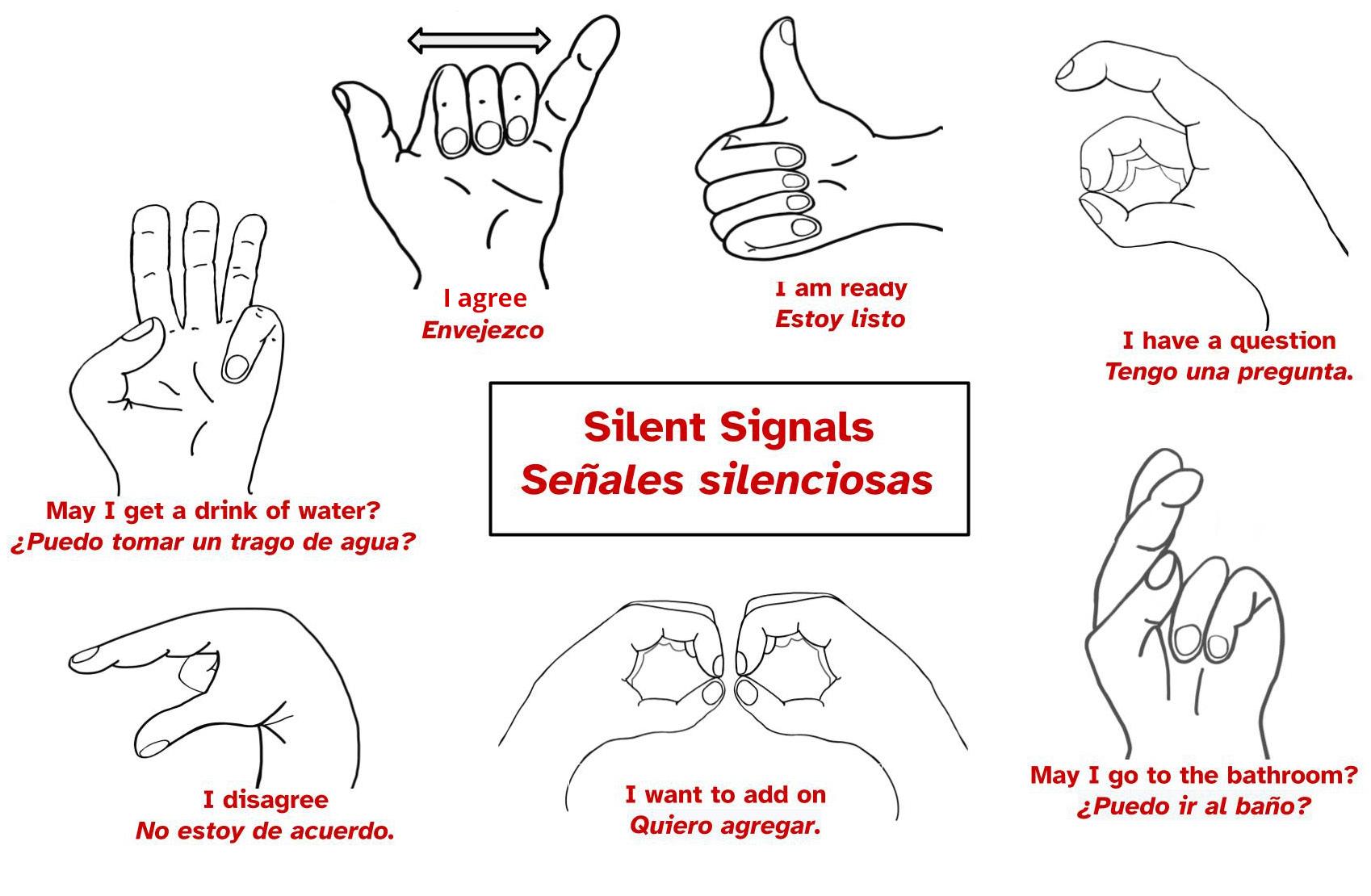
Handouts, Worksheets, Teaching Resources
Engagement Action Plan Checklist
Lesson: ___________________________________________________ Date:________________________________________ Learning Goal: __________________________________________________________________________________________ What worked? ___________________________________ What did not work? ___________________________________
Concept Yes/No Successful? Adaptation for Future
Greeted students, made eye contact
Used student names?
Learning Goal stated and understood? Participatory transitions? (Make changing gears fun)
Lesson “chunked” into smaller bits? Pivoted when an activity didn’t work? Reflected back on Learning Goal? Closure: kids are positive?
YIA Lesson Plan [Template]
For example: Hello everyone, Let’s warm up by….
For example: Today we will be exploring… What do you already know about …? For this project we will use ….
For example: Now it’s your turn. Who can remind me what we will do first?
For example: Now it’s time to finish. Share your work with someone nearby.
Handouts, Worksheets, Teaching Resources
Visual Arts Daily Classroom Checklist
Keep on track with your teaching with this DAILY checklist.
Do not leave until you have gone through the entire list at the end of every day. Think about how your students can help: If not during class, there might be some who will volunteer to help wash brushes, sharpen, wipe down tables, etc.
PENCILS
• Sharpen all pencils
• RE-sort pencils: writing, colored, watercolor
• Store with points up in separate, marked containers
PAINTING
• Wash every brush, store with tip facing up
• Empty, rinse water cups
• Wipe down watercolor or tempera cake paints while still damp

• Rinse paint palettes (keep separate from paints)
• Store paint sets flat and uncovered to dry evenly
GLUE
• Close caps
• Clean off drips
• Place in their storage space
STUDENT ARTWORK
• Make sure names are on every piece, plus teacher or room number if needed
• Sort artwork clearly by classroom, store safely
PREP FOR NEXT PROJECT
• DO THE PROJECT, check your understanding and how you will “chunk” the instructions
• Make a list of what you have, what you need to get
• Look at what you will need, sort trays appropriately
• Put away anything not needed for the day’s project
Handouts, Worksheets, Teaching Resources
Teaching Artist Observations
Areas of observation are based on best practices in teaching the arts, and include:

Organization of Materials and Space
• Students can see, hear, and physically access materials and instructions
• Offer choices of adaptive or alternative versions of tools & materials
• Orient yourself so that all students can see and/or hear you
Instructional Techniques
• Give instructions in multiple ways (visually, verbally, physically)
• Establish routines and sequences that are understandable and predictable
• Engage students by connecting content, activities to students’ prior experience & backgrounds
• Choreograph transitions to move seamlessly between activities and account for students’ needs and strengths
• Check for student understanding and progress through multiple modalities
• Break-down and scaffold activities to allow students processing & mastery time
• Vary instruction and participation modes - individual, small group, full class
• Offer reflection time, opportunities for students to speak up
Collaboration
• Exhibit camaraderie with classroom teacher
• Communicate with teachers before and during the residency about what is needed for residency success
• Identify allies in the school. Learn and use the names of teachers, aides and office staff.
• Align routines and strategies with those of teacher/school (i.e., transitions, calling on students, attention mechanisms, etc.)
Classroom Management
• Call students by their names
• Establish behavior expectations (i.e., classroom rules, roles & responsibilities, rewards & consequences, etc.)
• Provide specific mechanisms to redirect students
• Give students methods to ask for help, breaks, or personal space
• Collaborate on and model behavior support mechanism(s) with classroom teacher
Handouts, Worksheets, Teaching Resources
Allies in the Arts Classroom
Working together, we can provide more meaningful, successful arts experiences for our students. Our aim is to help students find their voice, express themselves, and build confidence.
Teaching Artists are highly skilled professionals in their field who have years of experience as artists and educators. They provide instruction in their specific area of expertise while simultaneously addressing the California Visual and Performing Arts Standards.
Classroom Teachers are encouraged to participate. When they do, they help build a collaborative environment and provide support with classroom management. Teachers become role models when they create alongside their students, and students get to see their teachers learn as well!
Student’s active participation in the arts looks different for every child and each brings their own experiences and abilities to the class. Our programs encourage children to develop new skills in the art form, collaboration, selfconfidence, and communication.
How to Be a Successful Ally in the Arts Class:
• Set a good example for the children by listening carefully to all of the TA’s instructions.
• Supervise students if they are working outside of the classroom or in a separate group.
• Echo directions and techniques provided by the TA and help answer questions pertaining to the project.
• Aid in classroom management by helping students to focus and follow directions:
• Utilize positive reinforcement when speaking with students
• Protect other children’s rights and manage instances of bullying.
• Encourage students to resolve their own problems - Don’t “steal the struggle”.
• Be flexible and supportive: projects evolve based on specific group dynamics.
• Ask good questions. Encourage students to talk about their work: Tell me about your drawing. How did you make that color?
• Reflect what you SEE with specific words, instead of general praise such as I like that or good job. For example: I see you used blue and made two circles. Or, I see you are working very hard.
• Ask open ended questions: instead of offering specific directions (Why don’t you add a shape in that corner?), ask What happens next?
• Clean up: Support students in doing their own cleanup. Resist putting glue stick caps back on, etc., unless asked by the teacher.
Volunteers are Welcome in the Arts Room!
When volunteers aid the teacher and TA in facilitating the project at hand, they make it possible for both the teacher and TA to focus on the students. We are allies! Talk to each other to learn how we can work together.
• Arrive early enough to help with set-up and stay long enough to help clean up supplies.
• Sharpen pencils, wash brushes, or do other unfinished tasks to be especially helpful!
• The TA provides all instructions unless you are otherwise instructed.
Handouts, Worksheets, Teaching Resources
REFLECTION in the ARTS CLASSROOM
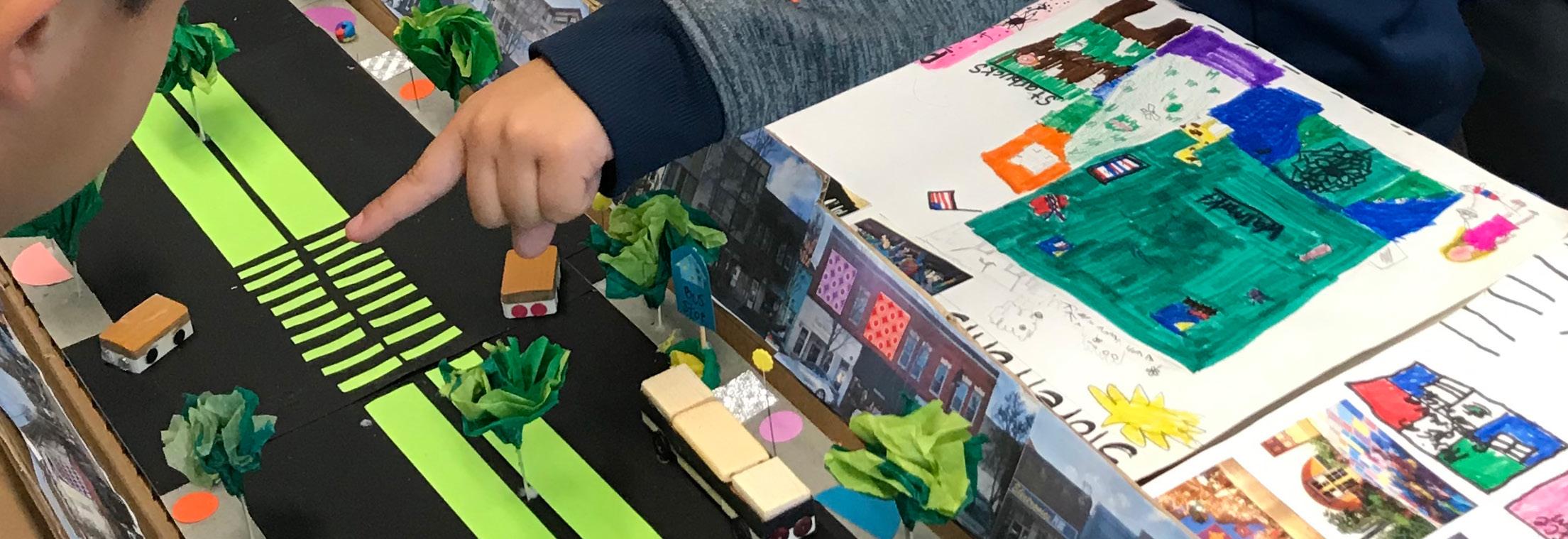
1. After you ask a question, give students time to answer it. Count to five in your head if needed.
2. Encourage students to translate for each other, and to respond in any way possible (English, another language, hand gestures, physical movement)
3. Acknowledge the answer you hear from the student before you ask the next question.
4. Build on their answers, especially with concrete feedback in the art form (ex. “I used red.” response: “I see where you used the red. I also see that you chose to put the blue next to it. That helps to balance the composition.”)
REFLECTION In Process:
Describe what you see or hear in concrete terms (shapes, colors, lines, etc.). Avoid placing an adult value judgment on the work (if you use words like nice, beautiful, or “I like it”, give a reason to back up the comment).
• What’s the most important part of your work?
• How will you make the most important part stand out?
• When a child is discouraged or not happy with their work, instead of saying
• “It’s great – keep going,” acknowledge their frustration: “What are you not satisfied with? Here are some things you can consider...” then offer fine arts techniques or ideas that they could employ to change the outcome: “Have you thought about changing levels in your dance? Have you considered working with a classmate on this part?” Etc.
• “Stand up and walk around the room: do you see something your classmates are doing that you could employ?”
• If you see or hear something wonderful, ask “Will you be comfortable sharing that at the end of class?”
• BEFORE you ask “Are you done?” ASK “What happens next?”, “Tell me more! What made you think of that idea?” or “How did you make that rhythm?”
REFLECTION (end of class, 5 minutes or more)
• Make sure that everyone is fully engaged with the listener (ACTIVE LISTENING).
• Clean-up is completed, students are finished working.
• Move to the rug/circle.
Handouts, Worksheets, Teaching Resources
Ask Questions to Reinforce Your Learning Goal or YIA’s Big Ideas
My Voice Matters. • I can share my voice through my art • I show who I am through the choices I make in the arts and beyond.
• What was hard for you?
• What are you PROUD of?
• Tell me about a mistake you made.
• What CHOICES did you make that show more about you?
• What color(s) , shapes, lines, patterns did you use?
• How is your work the same/different from your friend’s work? How does your project connect to someone else’s? What do you see that makes you say that?
• Did you learn something from a classmate?
• Did you teach a classmate something new?
• Did you learn how to use a new material or technique today?
• What do you see in a classmate’s work you would like to try next time? Why?
• What happens next?
• What was challenging for you? What would you do differently next time?
• Would you like to add anything to this?
• I see that you used a lot of red/yellow/lines etc.
Consider engaging the teacher in the reflection. Can they help you find questions based on their work in other parts of the curriculum? (Adjectives, counting, storytelling, vocabulary)
Positive Reinforcement - Talking to Children
Children, like their parents, respond best to courtesy, tact, and diplomacy. Phrasing a sentence in the positive instead of the negative produces MUCH better results: “Please close the door” instead of “Don’t leave the door open.” Please give neutral feedback (“I see you used 5 colors!”) as opposed to general praise (“Good job”).
Try Saying Instead of
Paper is for coloring on. Please use the paper. I bet you had fun making that picture.
Would you like to tell me about your picture?
Paint brushes are for painting your picture. The clay needs to be kept on the table.
I need a helper to hand out brushes. It’s time to clean up now. Please help me. What happens next?
Don’t color on the table/your hands/the wall. I love it (empty praise) What is it?
Don’t paint your desk/Jenna with the brush. Don’t put clay in your hair. Sit still and wait for the next thing. You should put windows on your house. Why don’t you put something in that corner
Give super active kids a job (a sense of importance) to diffuse tension, and get them back on track. Engaging children more instead of less can help a lot to “get them on your side.”
When applicable, such as collage making, please offer a student a choice of 2 or 3 items rather than handing them one piece at a time.
Handouts, Worksheets, Teaching Resources
Name Game with Shape and Sound
A first day of school icebreaker, this is a great opening game to match student’s names with faces. Arrange students in a circle. A student says their name and makes a shape and sound to go along with their name. Everyone repeats the person’s name, action and sound. Repeat until everyone in the circle has said their name accompanied by a shape and sound. Students can use these sounds or shapes into dance moves. This team-building theater warm-up is based on the work of Viola Spolin.
Conductor
Through this theater activity, students learn how songs evoke emotion and feelings. One student is chosen to be the conductor and stands in front of the group. The other students are divided into sections of the “orchestra.” The artist instructs the students in the power of the conductor. Pointing at a player means to begin making music, hands pinched together and pulled out signals the conclusion of the music. “Hands up” is an increase in volume, and “hands down” is a decrease. Students are divided up into sections “ percussion, wind, and brass. If students do not have instruments, their body becomes instrument, playing with their body and voice. Students must all have their eyes on the conductor. Every song has a beginning, middle and end. Switch conductors as needed.
Create an Animal
This is a game that encourages interactivity. Arrange students in groups of three. Each group is given the name of an animal. They must come up with a way to demonstrate the animal, or act it out as a team. Then each group presents their demonstration to the group, who has to guess what animal it is. It may help to emphasize physical motion and not allow voices or sounds. This game with roots in theater, music and dance is based on the work of Viola Spolin.
Check out the ARTSbank here
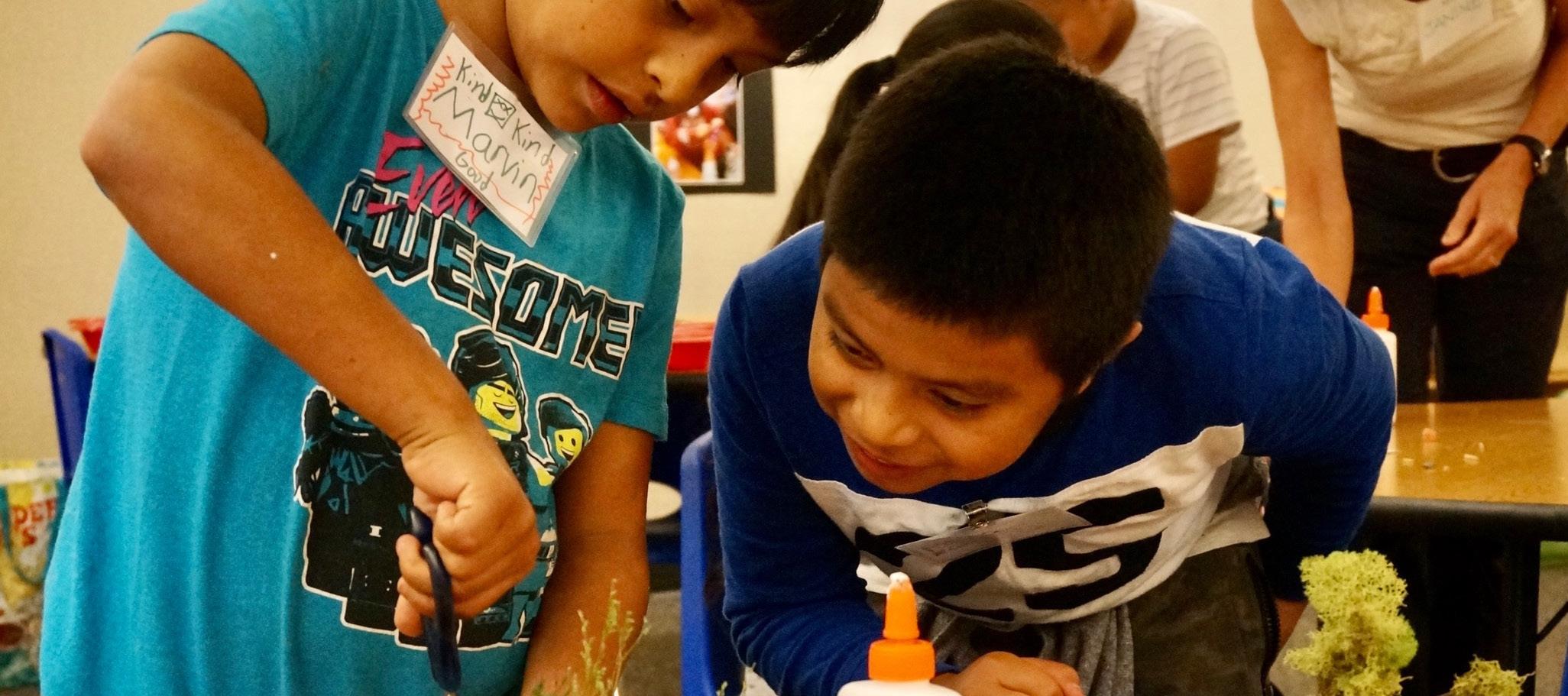
Handouts,
Dance Resources for warm-ups and team building
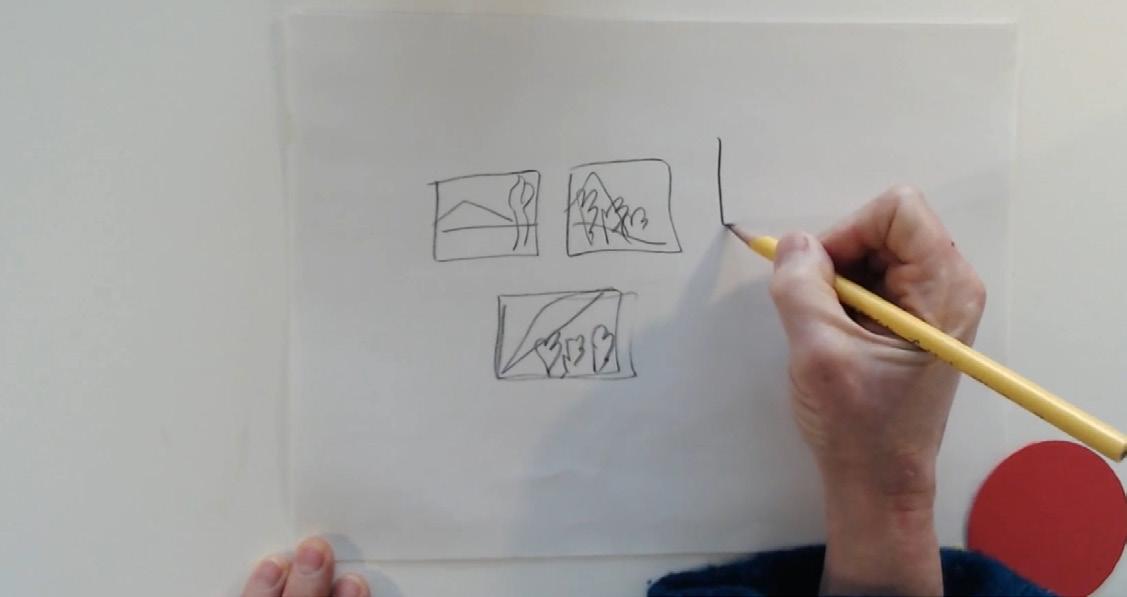
Youth in Arts Executive Director Kristen Jacobson leads participants through a fun dance game: Positive space, negative space, communication, reflexivity, and improvisation. Helps build relationship skills!
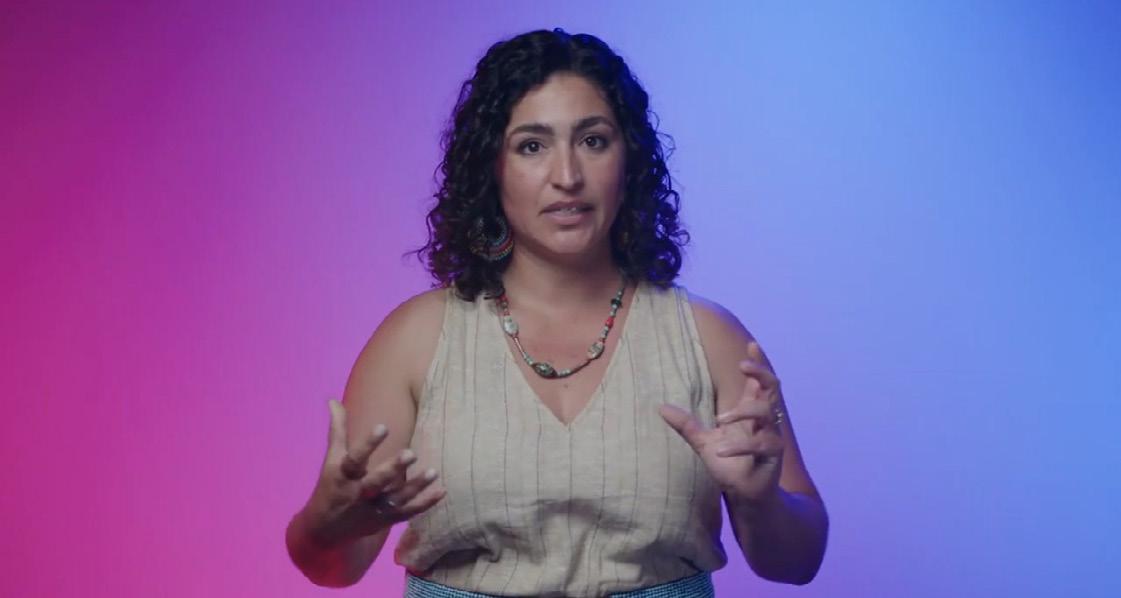
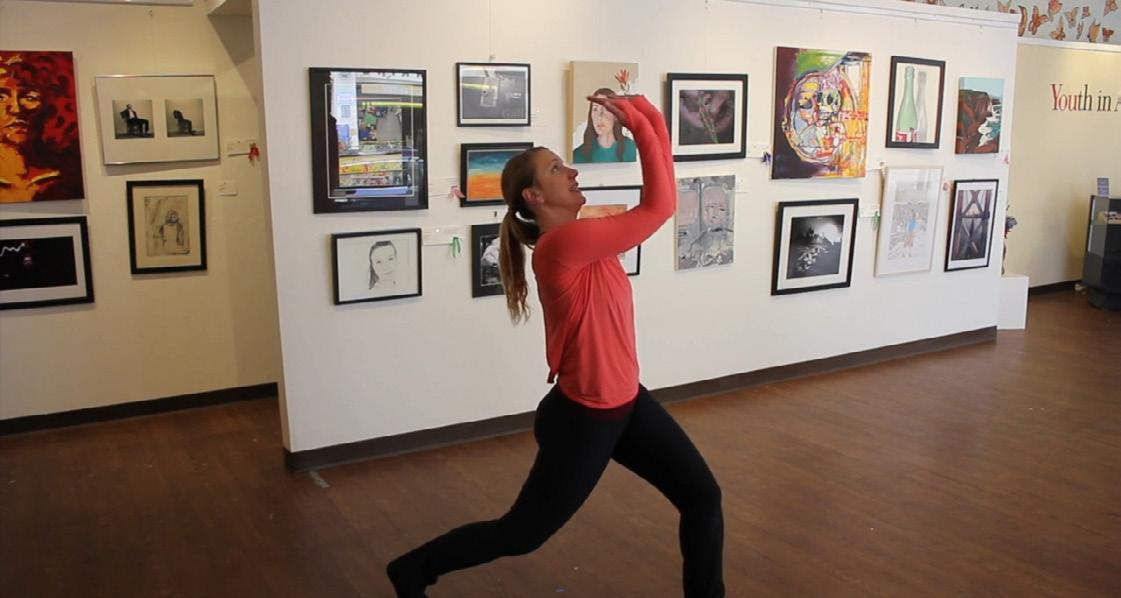
The Brain Dance was developed by dance educator Anne Green Gilbert (M. ED). It is based on eight developmental movement patterns “that human beings will move through in the first year of life via infant reflexes and floor play. These movement patterns integrate the brain and body. Brain Dance is an inclusive, adaptable, accessible full body and brain warm-up for students in classrooms and dance studios” (Dance Ed Tips).
